1lumen selects and reviews products personally. We may earn affiliate commissions through our links, which help support our testing.
Nitecore MH25 V2 Review
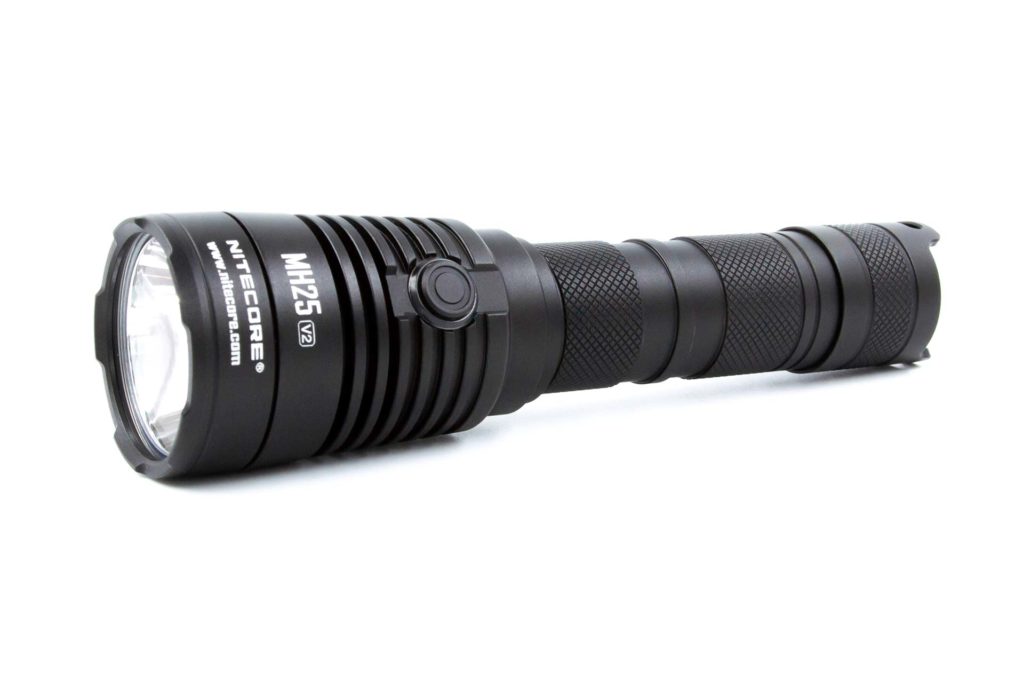
Nitecore MH25 V2 specifications
| Brand/model | Nitecore MH25 V2 |
|---|---|
| Category | Best tactical flashlights |
| LED | “High Performance LED” |
| Lumens | 1,300 lm |
| Beam intensity | 57,000 cd |
| Battery config. | 1*21700 (with adapter for 1*18650 or 2×16340/CR123) |
| Material | Aluminum |
| Modes | 4 |
| Blinkies | Strobe, SOS, beacon |
| Reflector | Smooth |
| Waterproof | IP68 |
| Review date | January 2022 |
Introduction:
NOTE: This review has been updated in December 2022, to reflect the upgraded LED. This only reflects the LED measurements.
It’s been some time now since I played with a new Nitecore light – after testing out the T4K and TINI2, I’m back to looking at Nitecore’s regular sized lights, and this one’s quite interesting to me.
I’m always on the lookout for a light that will fit specific niches, and the one I’m trying to fill at the moment is for my firefighting helmet – although I do need to find a suitable mount for it (thanks Pacific, for only having Pelican and Underwater Kinetics mounts).
With an indeterminate “high performance LED”, I’m very curious to see the beam and output, and how it stacks up against other known emitters.
The Nitecore MH25 V2 is a tactical flashlight, and naturally, an evolution of the MH25 – it was an 18650 light with a Cree XM-L emitter. The V2 steps that up in every way, with higher cell capacity thanks to the 21700, higher output, longer throw, and longer runtimes.
Let’s see how this compares to the other Nitecore lights I’ve used and reviewed in the past!
Package quality.
Nitecore sent me this light as somewhat of a pre-distribution copy, so I didn’t receive the retail packaging. That’s a bit of a shame, as I always appreciate the attention to detail that Nitecore put in their packaging designs.
I received:
- The Nitecore MH25 v2 itself
- Inside, an NL2150 cell, with the obligatory isolator plastic
- USB-C to USB-A cable for charging
- A spare o-ring
- The clip that I’ve come to know from previous Nitecore reviews
- Battery magazine to convert either an 18650 or two 16340/CR123 cells into a “21700” shape.
- Branded lanyard (I love these things)
This appears to be pretty close to the retail offering, which also adds a holster. What I received is plenty enough to get up and running, but I do like a good retail box.
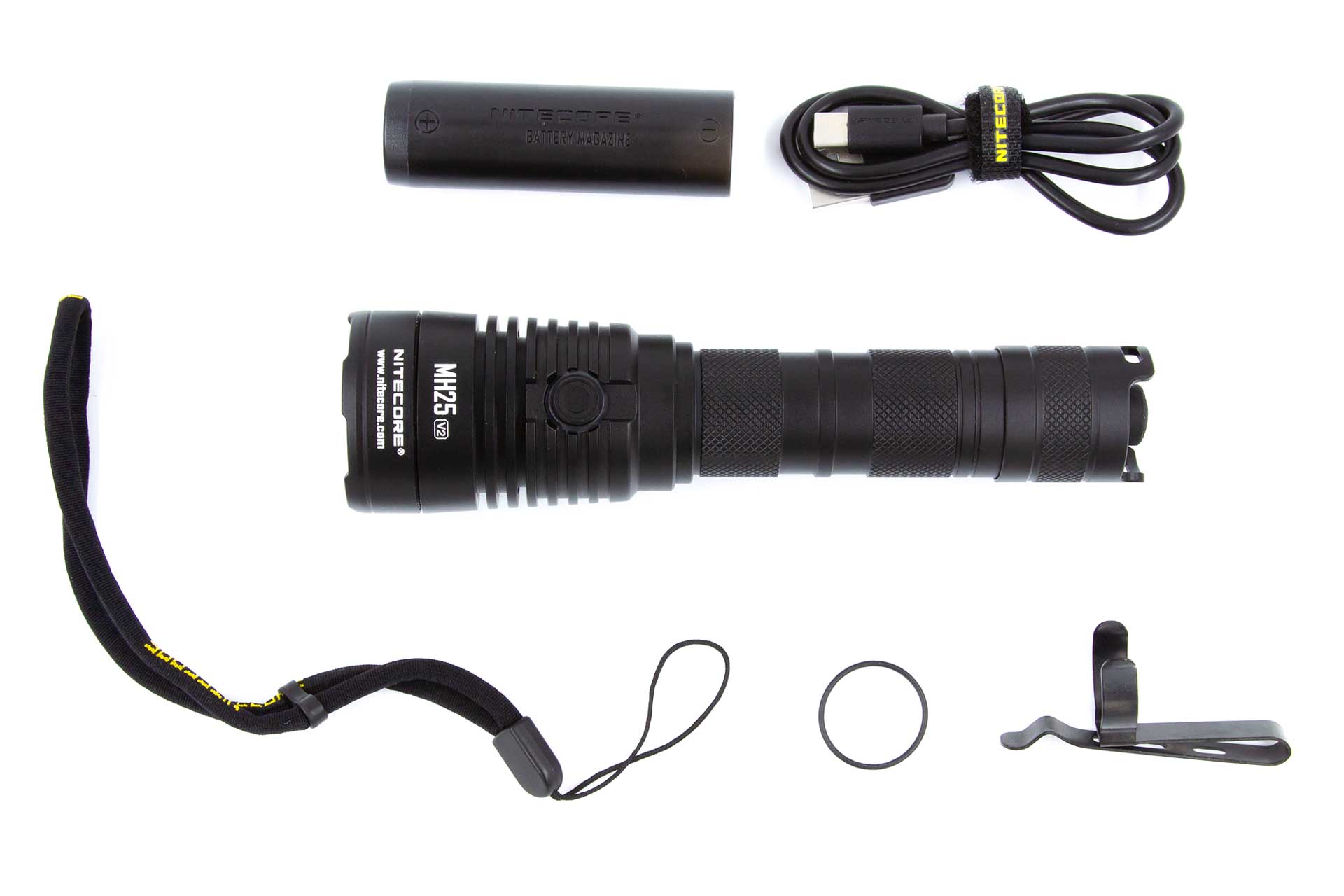
Flashlight in use
The MH25 V2 has a forward-clicky tail-switch for on/off and momentary mode, with an e-switch near the head for mode selection. I like the setup, but when holding the light in the over-hand position, you need to shuffle your hand up the light to press the mode switch with a pinky, and I’ve got decently large hands too! Holding it in the under-hold position makes mode changes far easier with your thumb, but I guess it really depends on the situation you’re using the light in.
Holding the light under-handed, the knurling and ridge between clip positions are sufficient to give good grip without it being too onerous on the hand. The satin finish on the anodization makes it very nice to hold, too.
Because the head and body are primarily round, without a clip, it will roll freely if placed down on any kind of incline. The button doesn’t protrude enough to break the straight line between head and tailcap, but for usability, that’s probably a good thing.
The light can tail-stand quite well, but given the type of light, it’s probably not as useful as first imagined. Ideally, the “stands” would be a little wider to give it more stability, but they’re still perfectly usable.
For transporting the light, due to the size of the light’s head, it’s best clipped to a bag or belt reflector-down, and not in a pocket. I’m not in a position to talk about the holster that’s included in the retail release as I didn’t receive one, but looking at a video from Nitecorestore, it appears to be a nylon holster, not a hard plastic one like from the MH12S or P20i. This isn’t necessarily a problem though, as these types of holsters can be quite handy too.
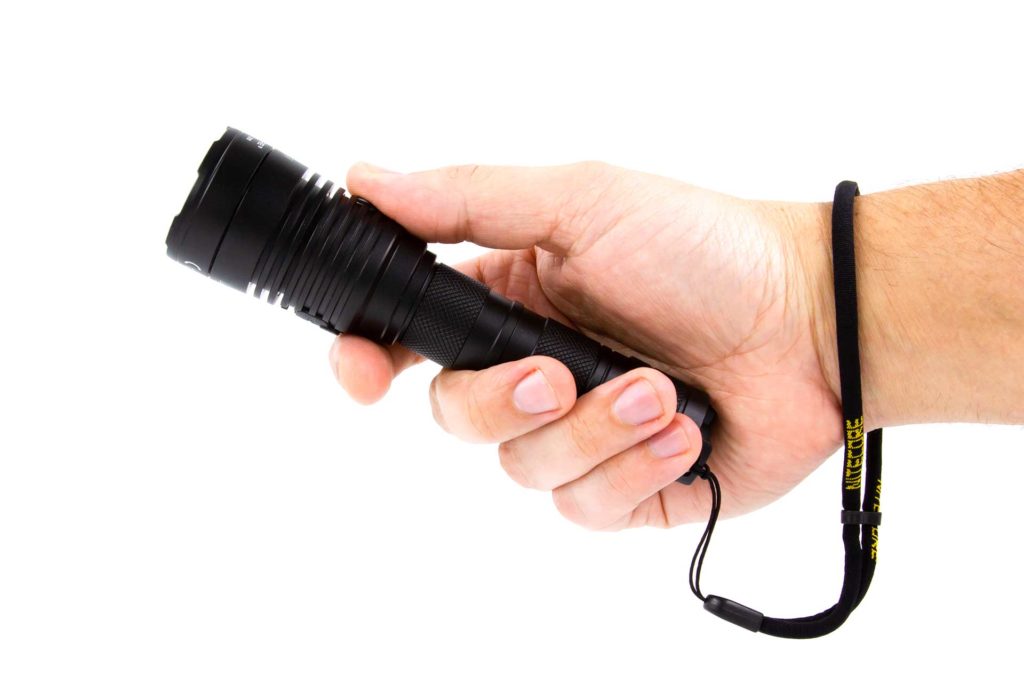
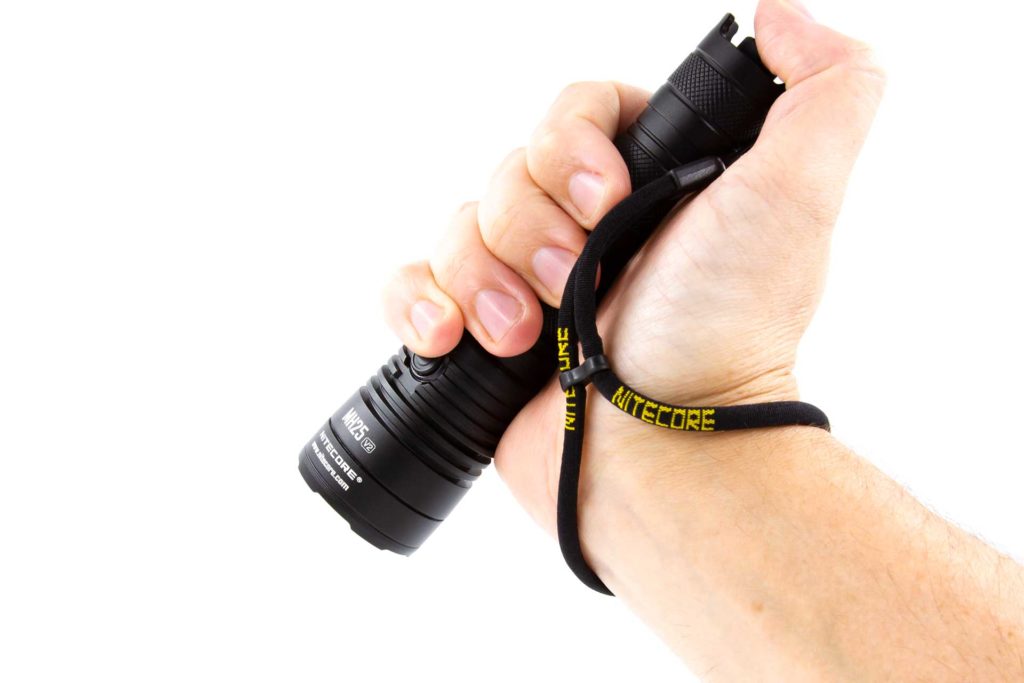
Build Quality, and Warranty
As mentioned above, the anodization on this, as with the vast majority of Nitecore lights, is a satin black. It’s a lovely smooth feeling without being overly glossy, and has held up to putting the clip on and off a few times; after wiping it with a cloth, I can’t see any marks in the ano.
Knurling is quite smooth, with a bit of grip given by the texture, but not so much as to be anything approaching uncomfortable.
The threads are well lubricated and triangle cut and the tailcap is easy to remove when needed without being loose in any way.
The included clip can sit in two positions in the middle of the body tube, but given that the positions are so close, it’s much of a muchness as to which position you put it in.
Nitecore’s warranty is quite extensive – there’s a direct DOA replacement from your vendor within 15 days of purchase, then followed by 5 years of repair warranty for defective or malfunctioning lights. Beyond that, the warranty covers the cost of replacing parts if needed, but not the parts themselves (though costs on parts is unspecified, so DYODD and all that).
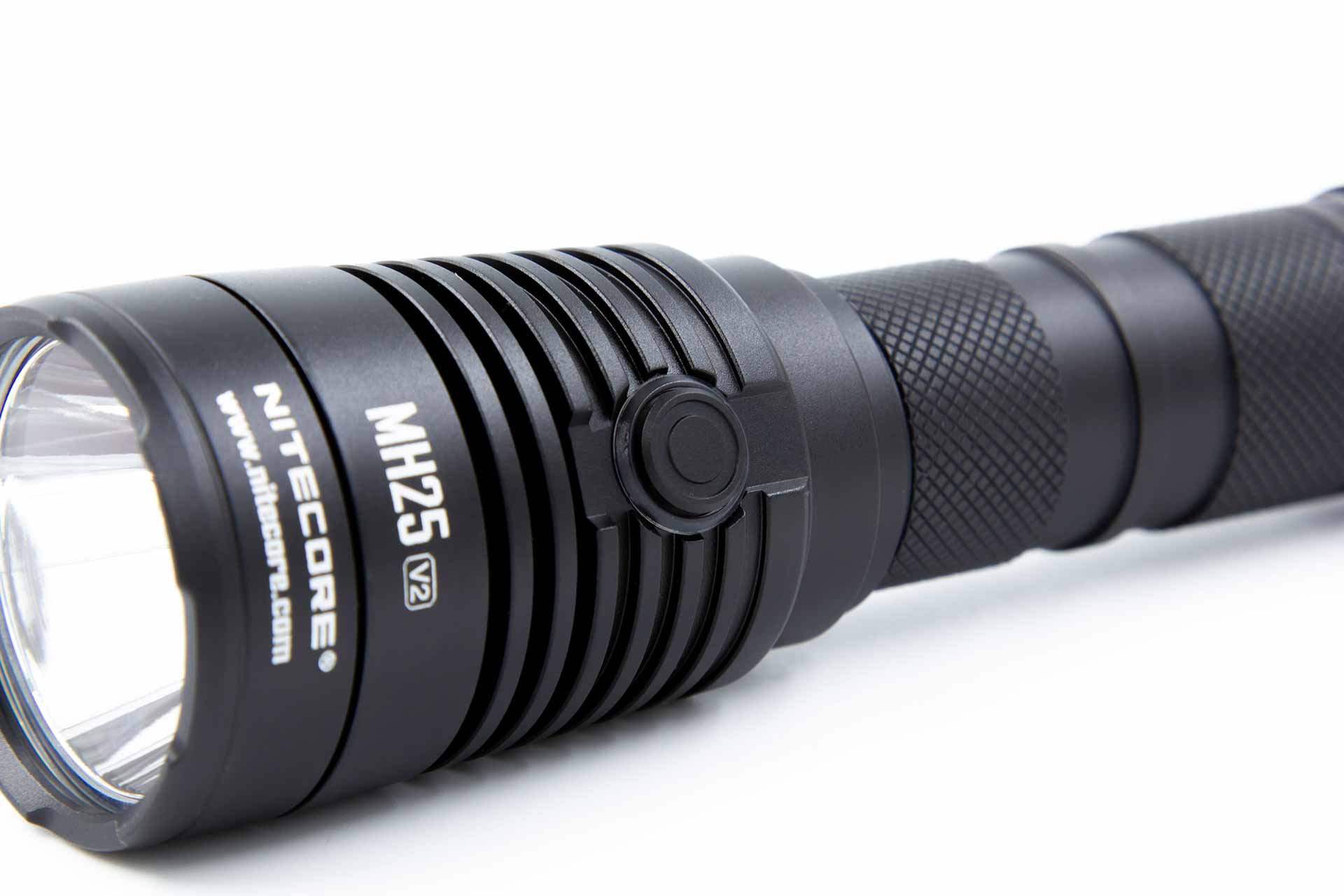
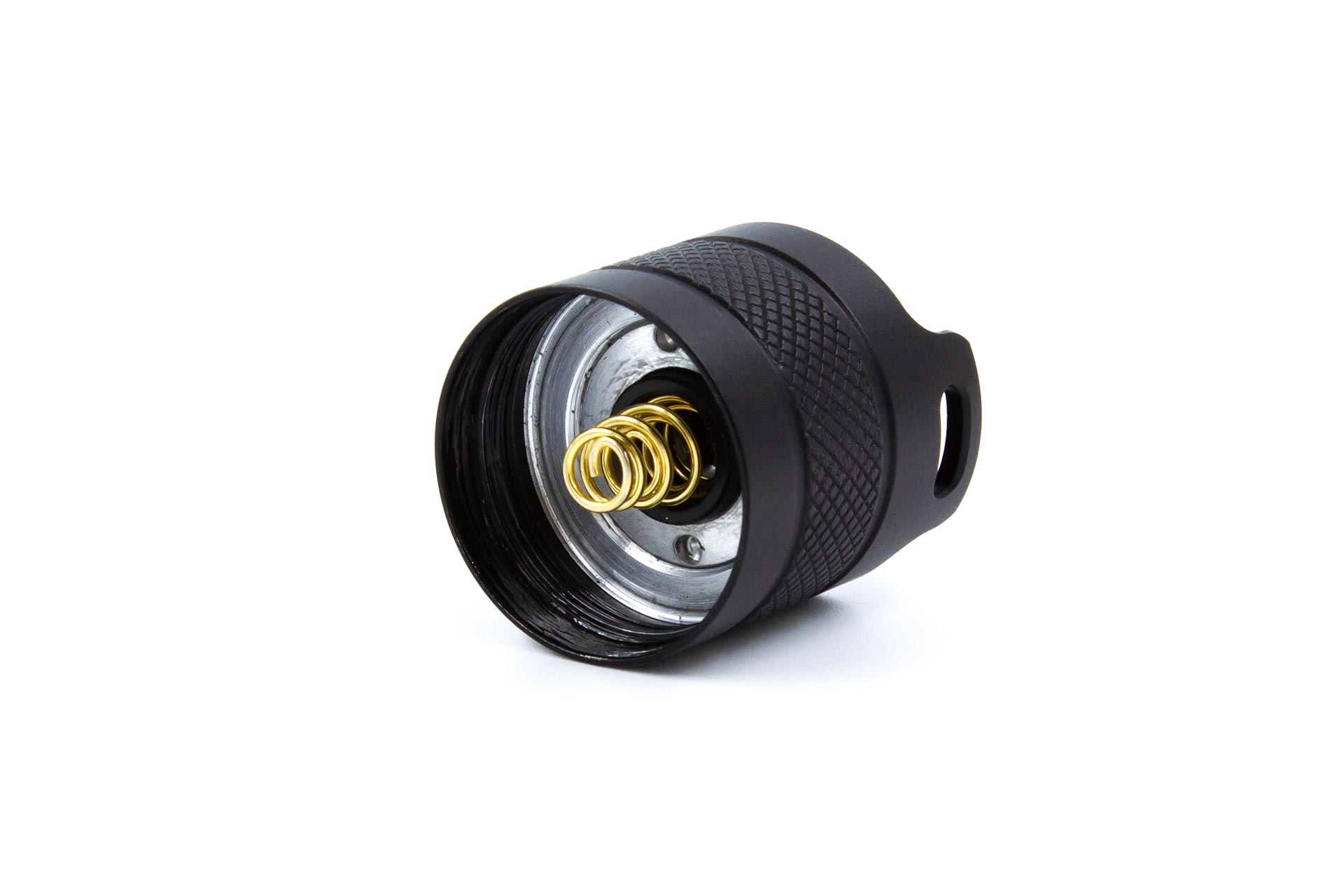
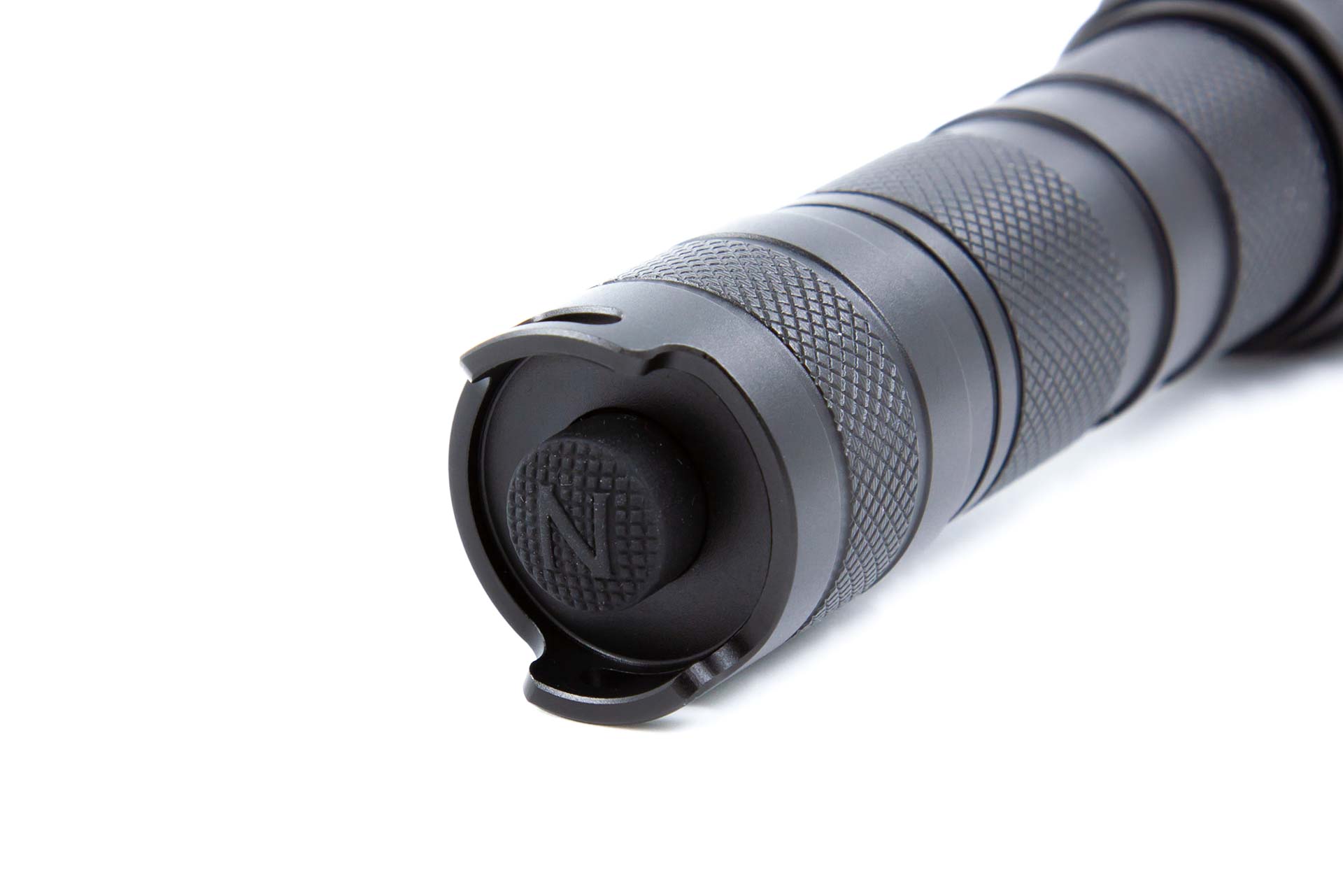
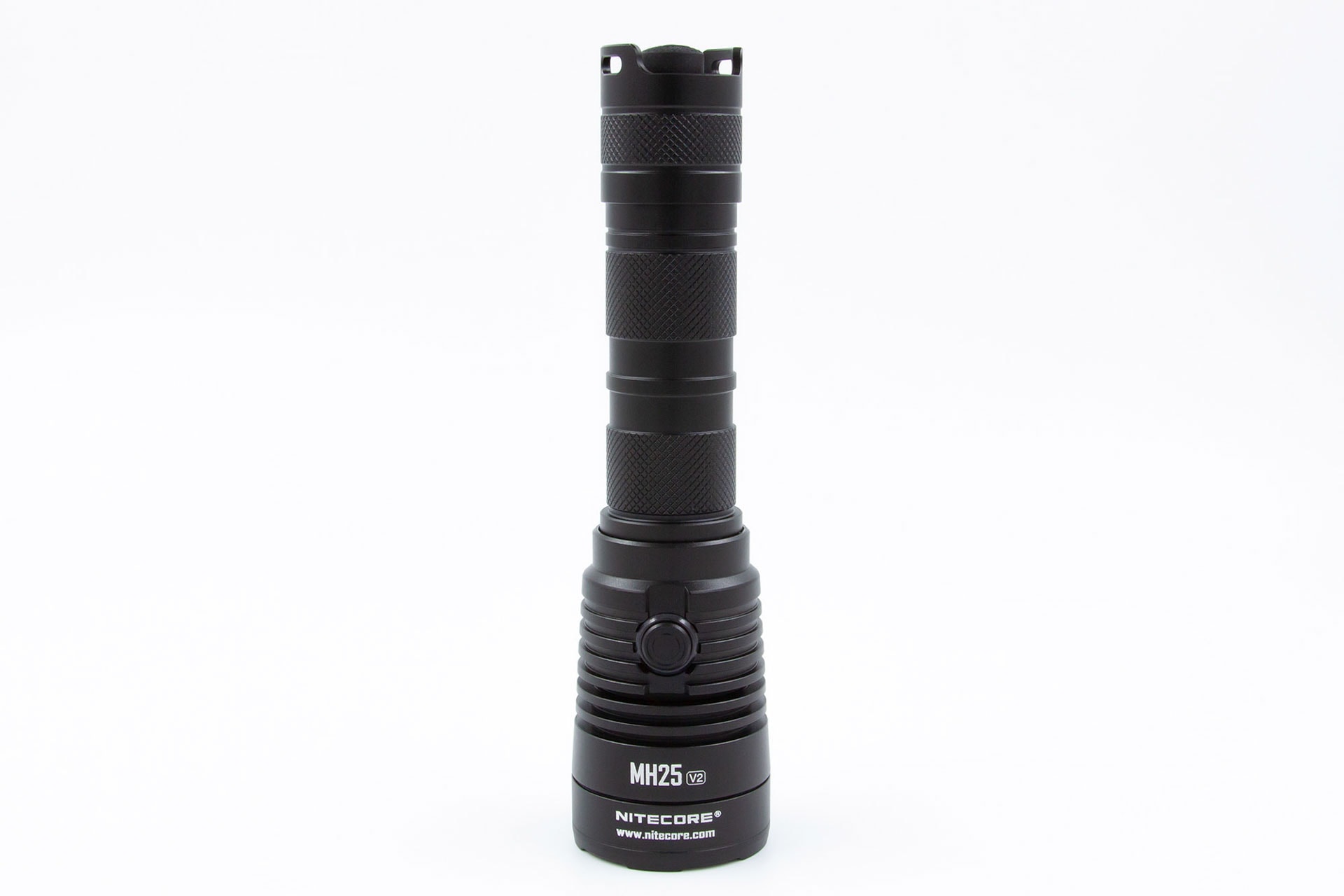
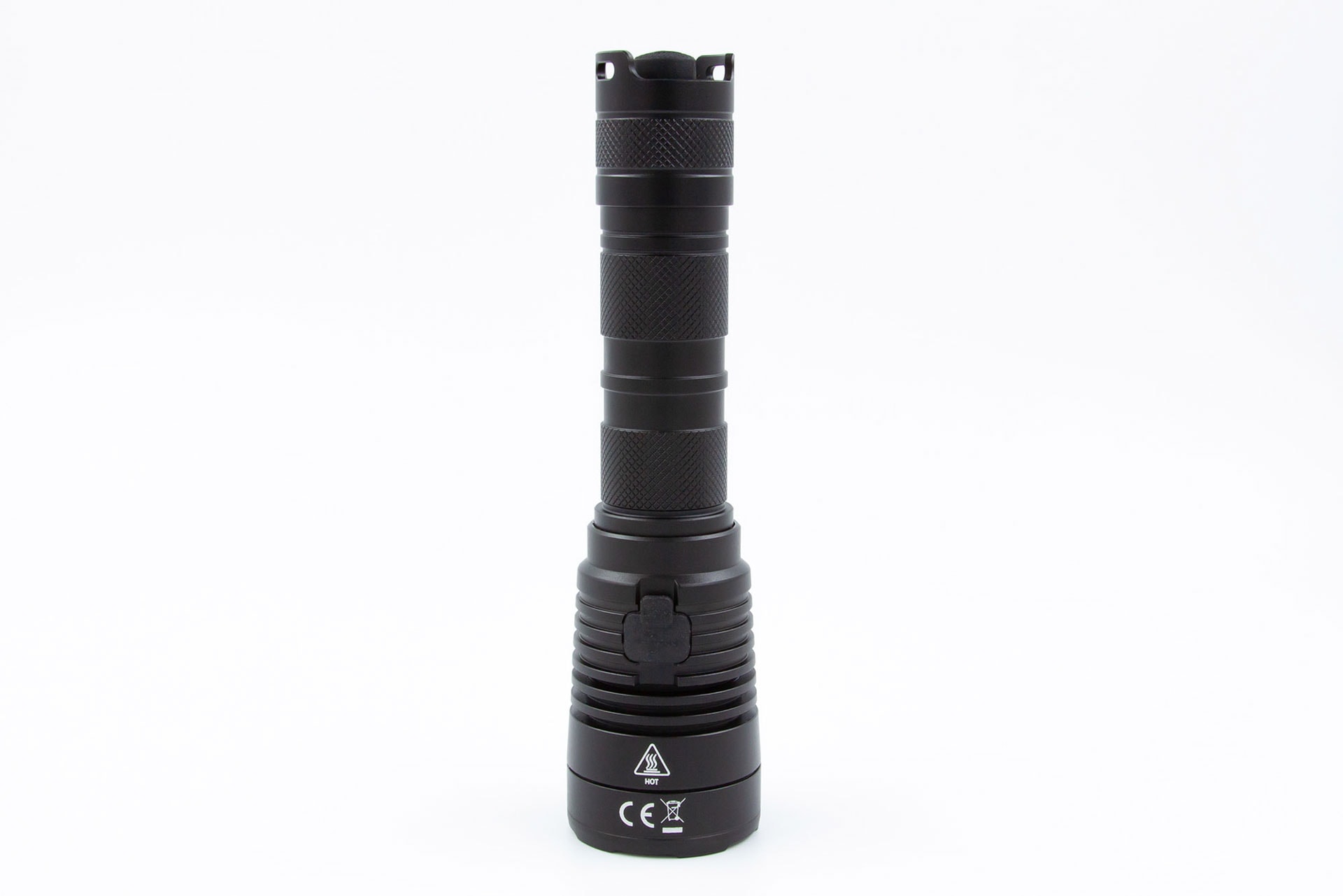
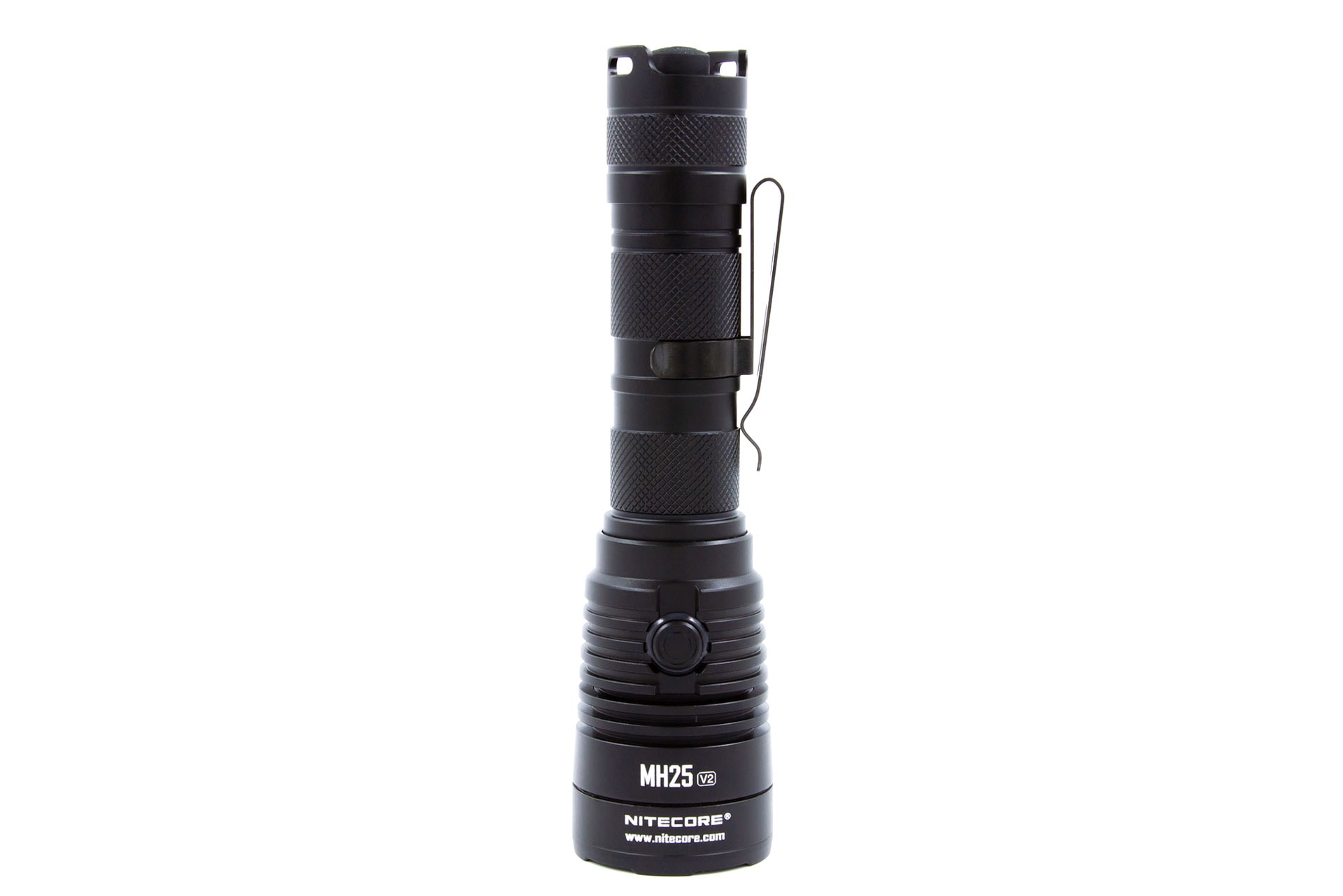
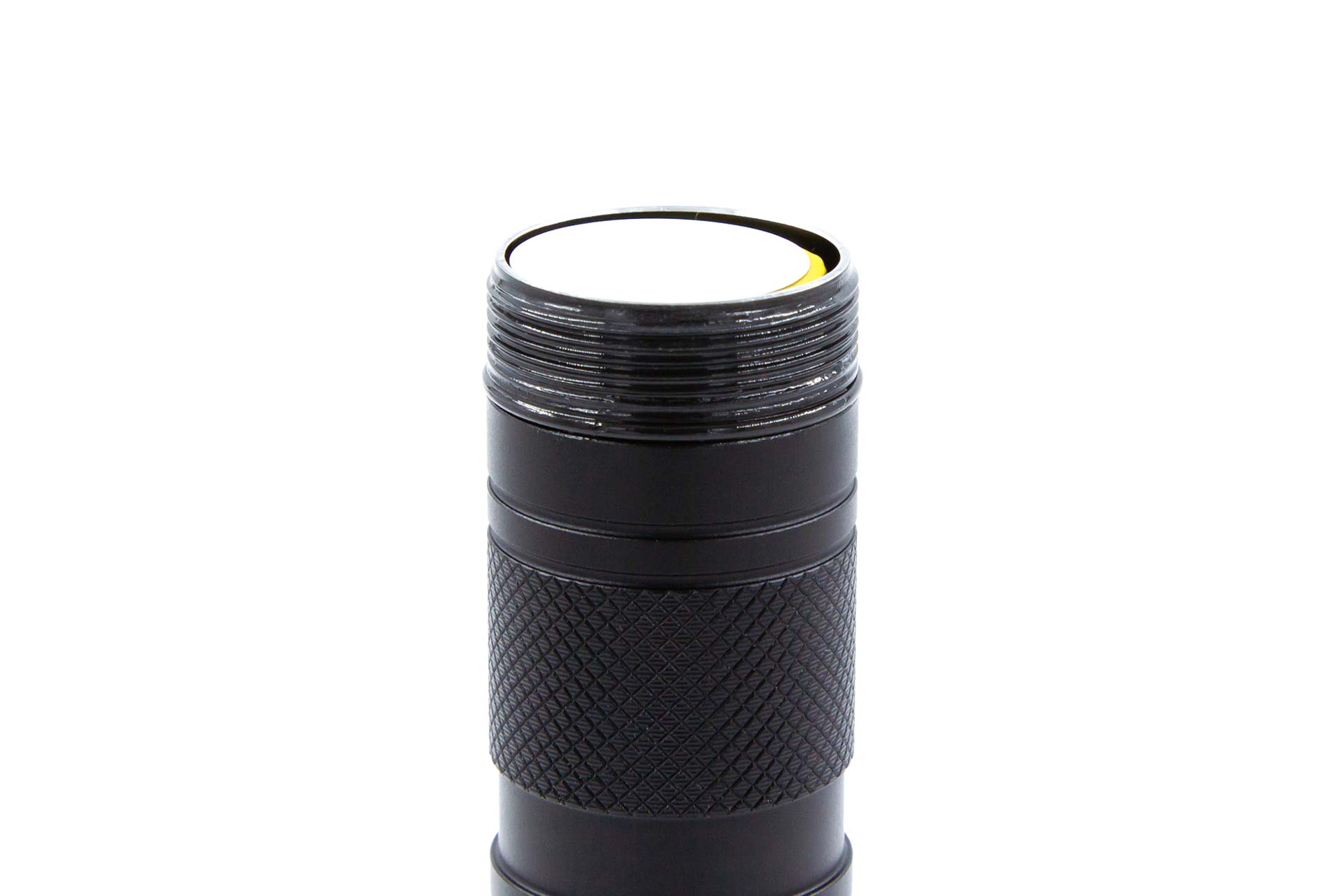
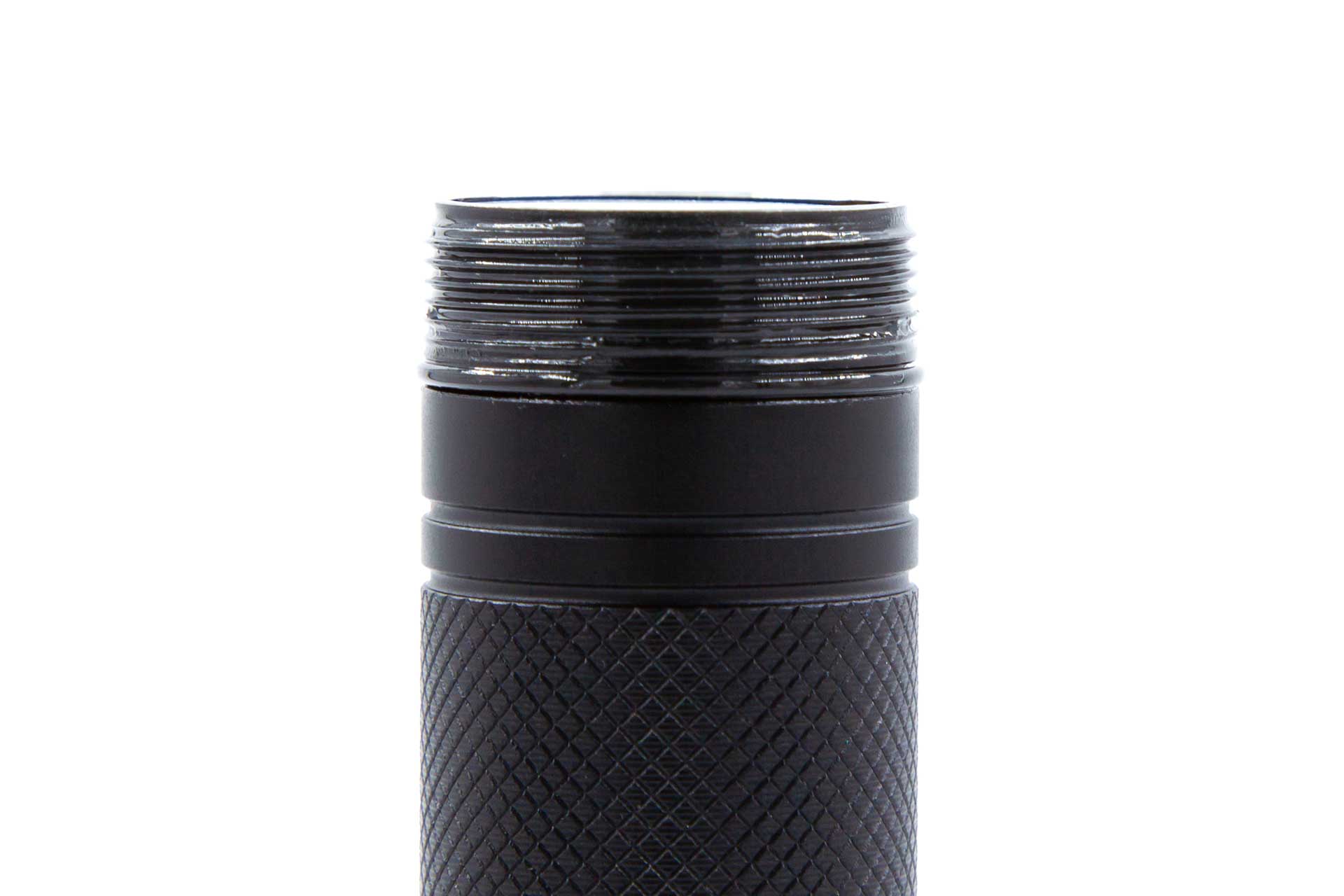
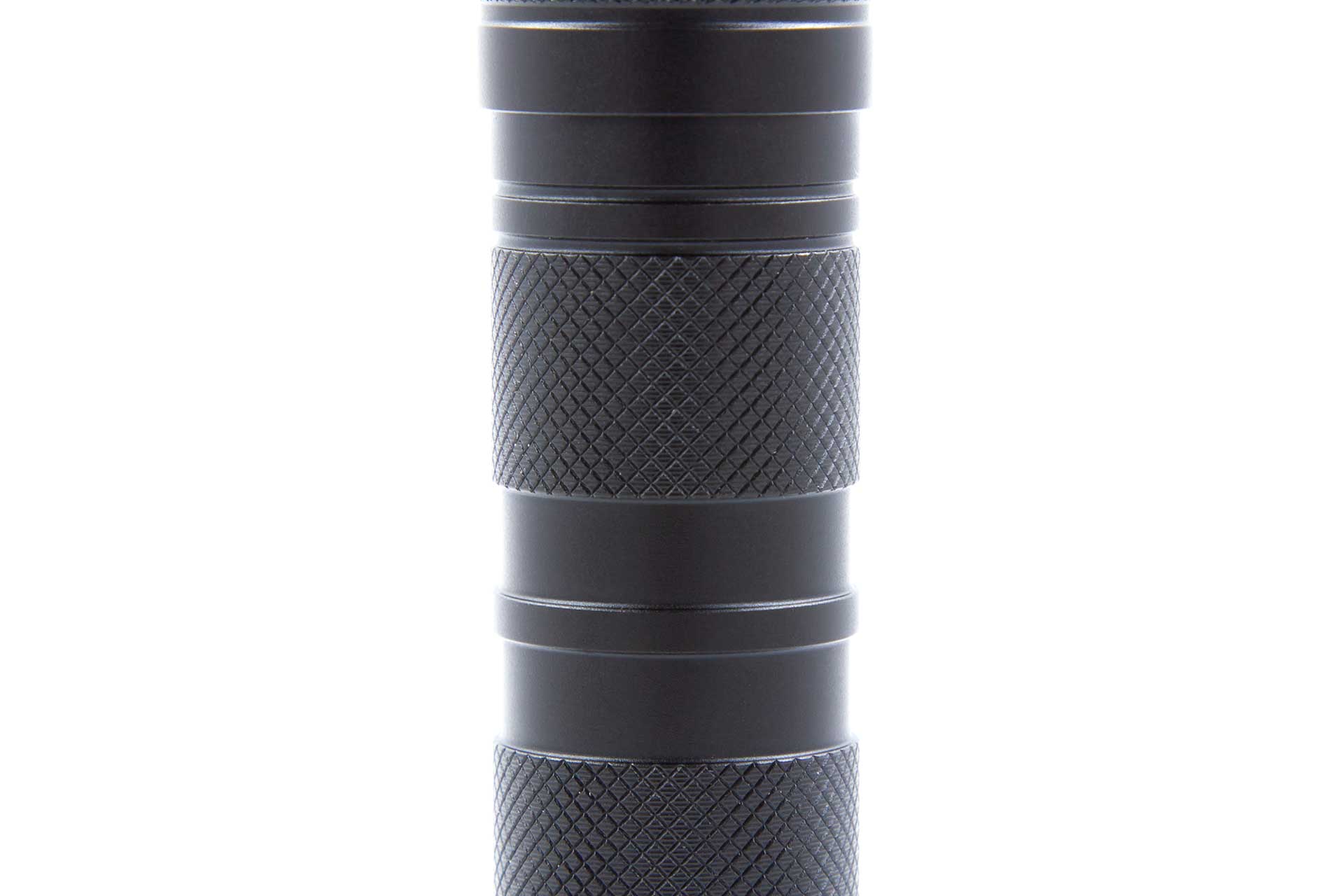
LED, Lens, Bezel, Beam, and Reflector
Ooooh, where to get started?
The thing that got me the most on this light is it being specified as a “High Performance LED” everywhere by Nitecore. This isn’t like them; they’re usually very open with the details they give about emitters which is nice, but this was a bit of an irregularity.
EDIT: Nitecore updated the LED of the MH25 v2, so I remove the initial text about the former emitter.
The old emitter has a relatively cold/white center, but the spill is very greeeen. I retested both versions. Level 1 at about 1 meters distance, and Level 5 at about 5 meters distance.
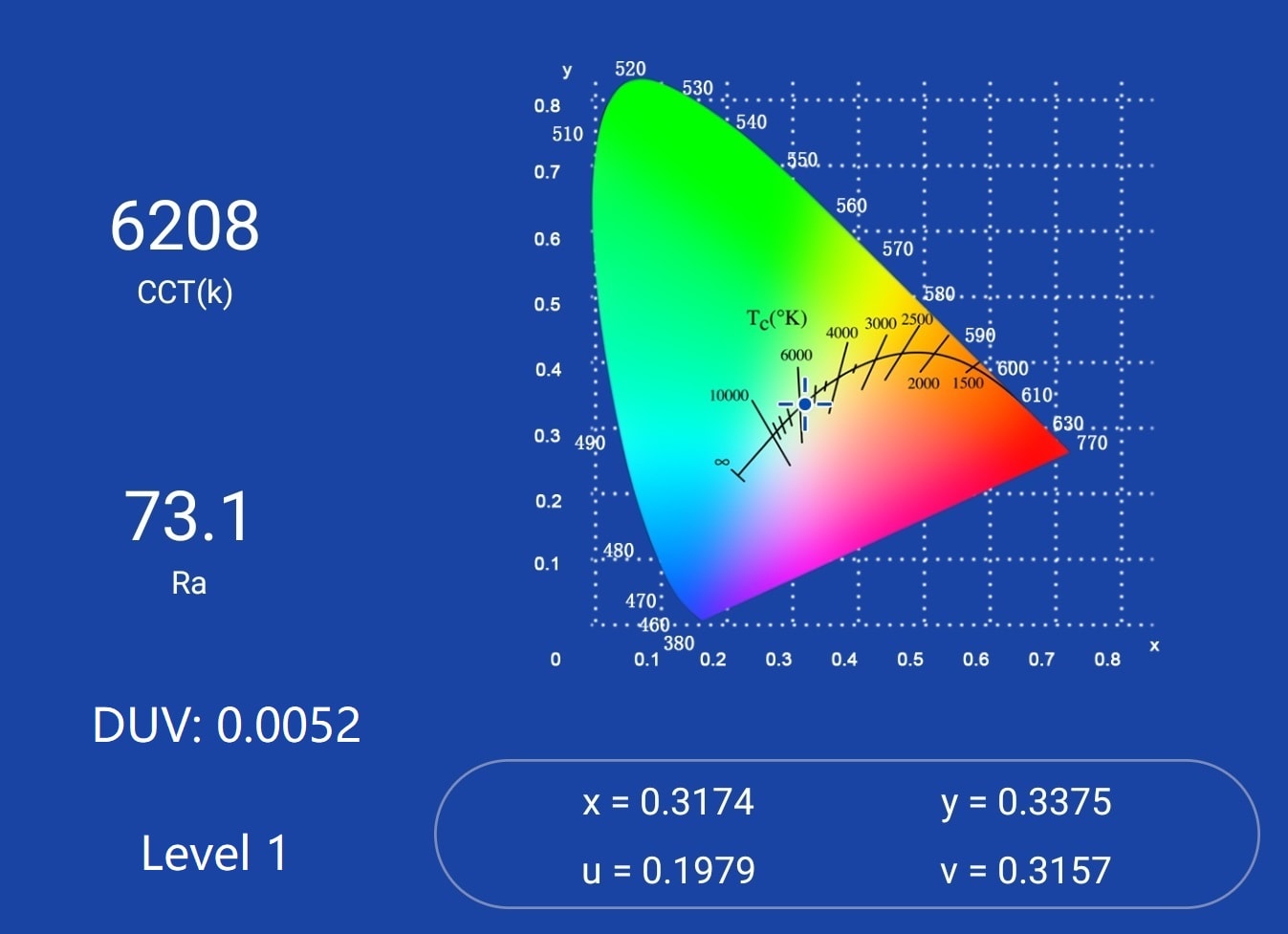
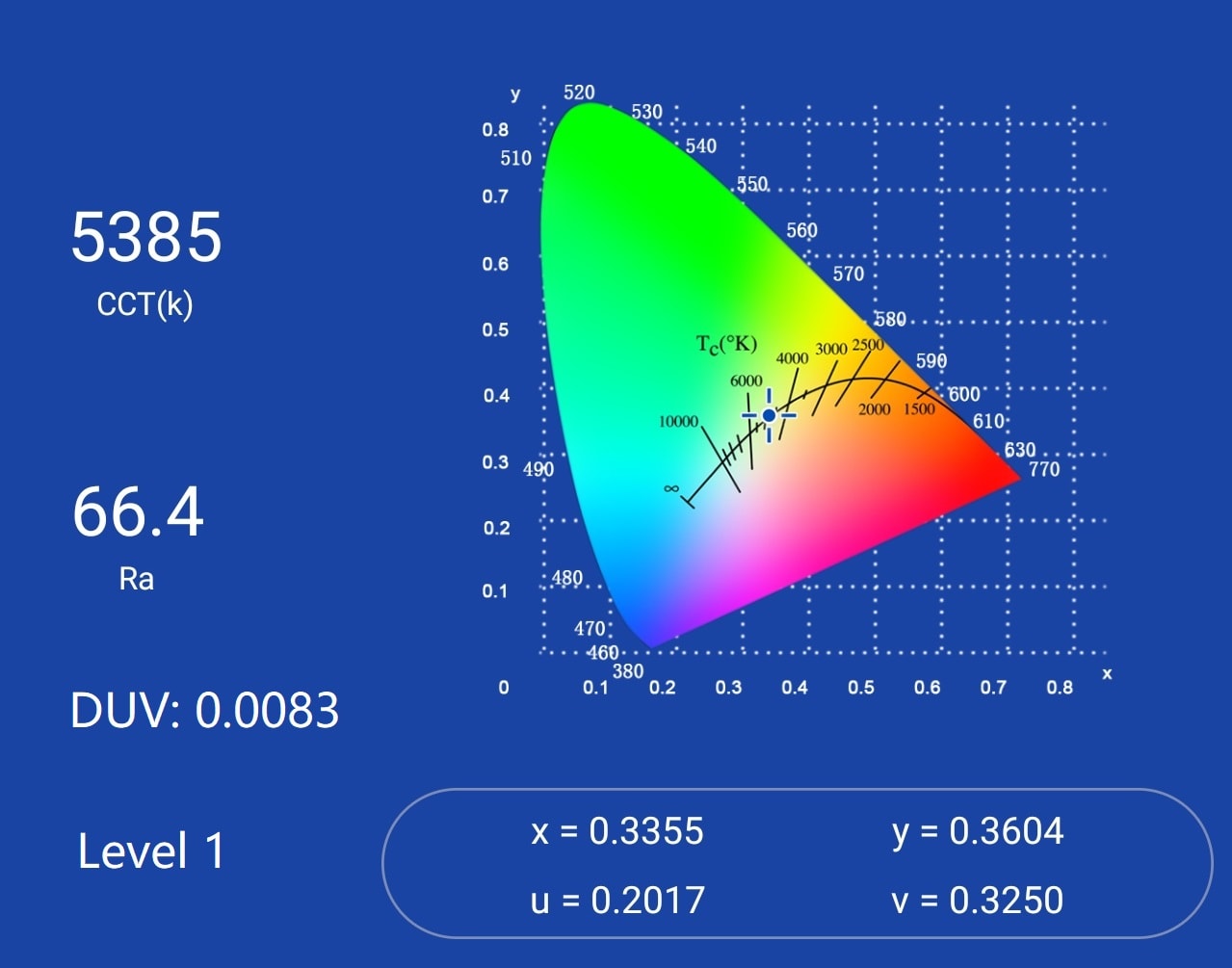
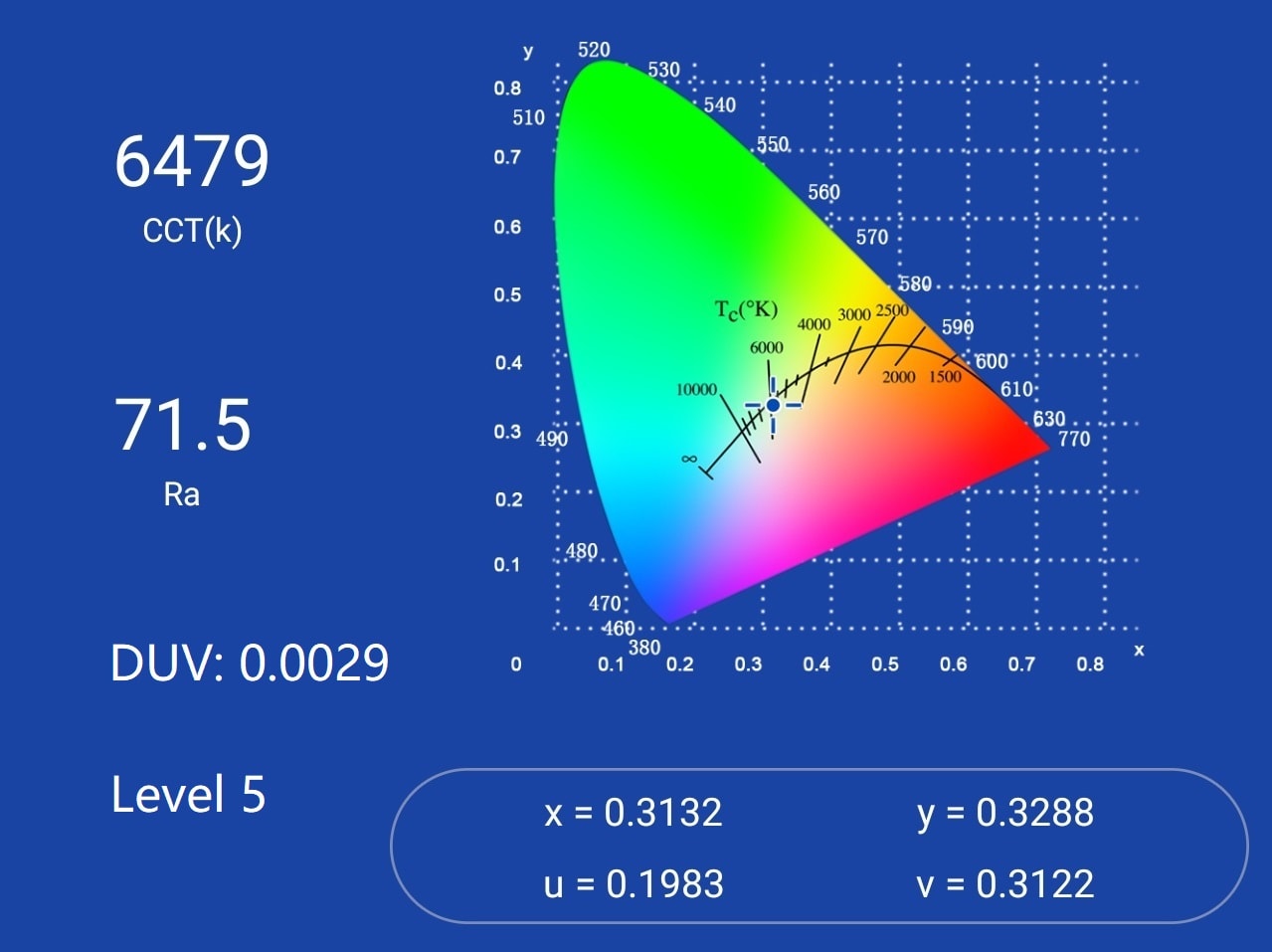
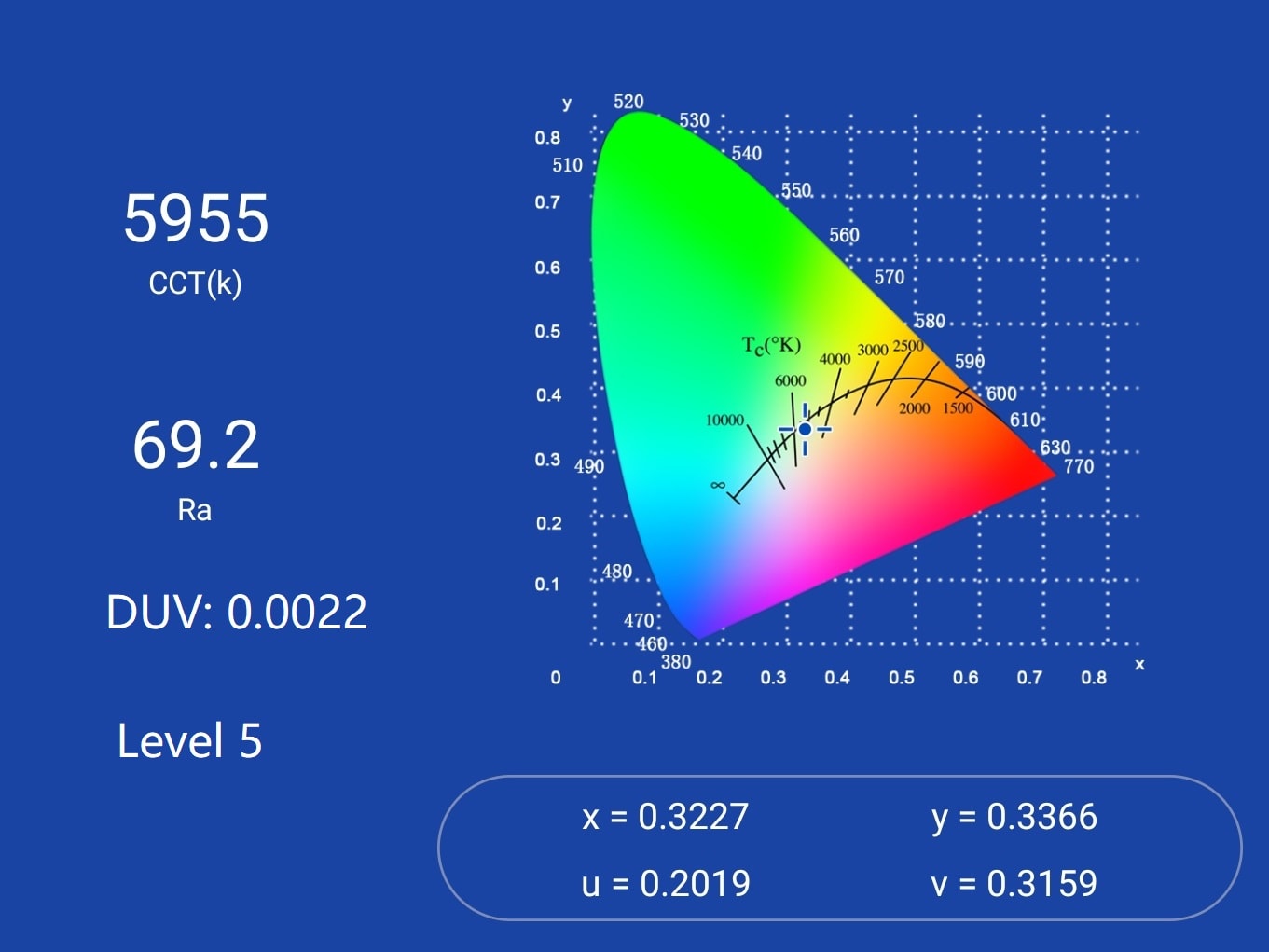
It’s interesting to see that the old emitter didn’t have too bad DUV numbers, but these are measured in the center of the beam. I also tested the spill of the old LED, and got the following:
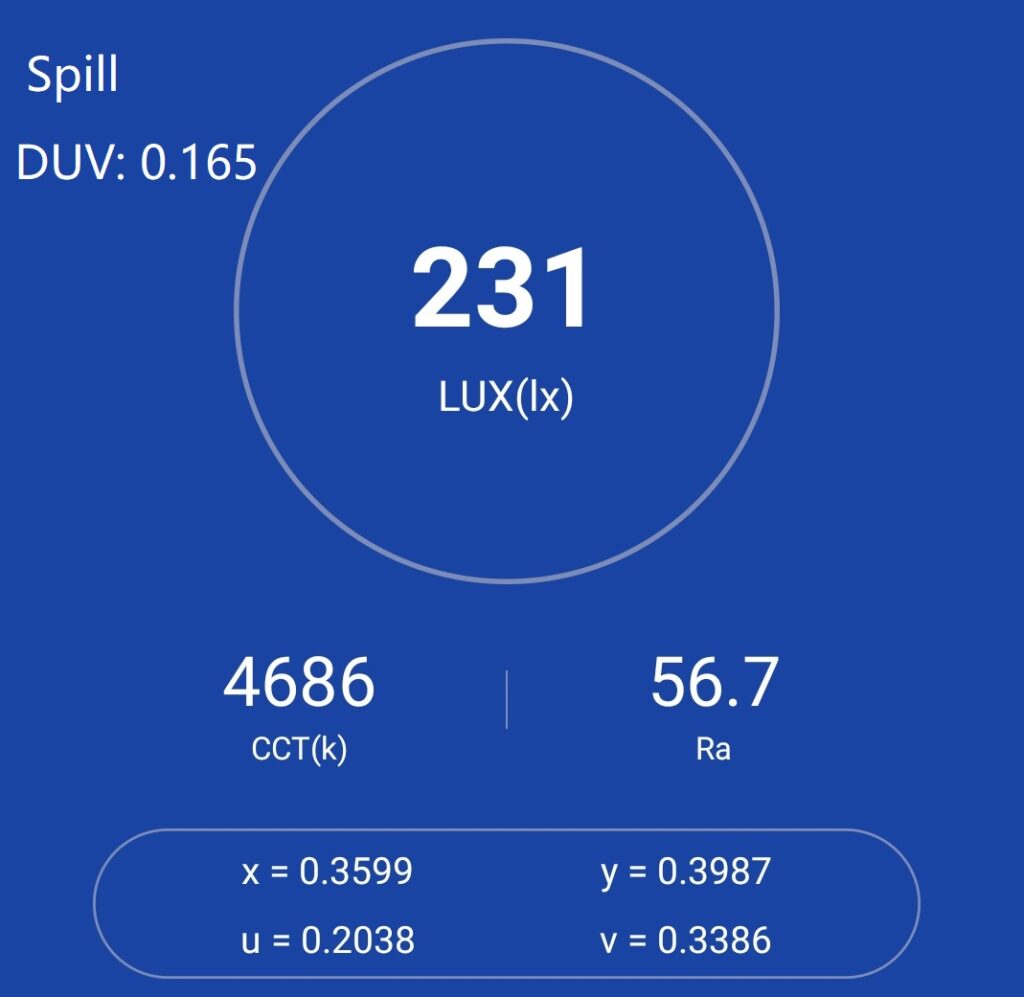
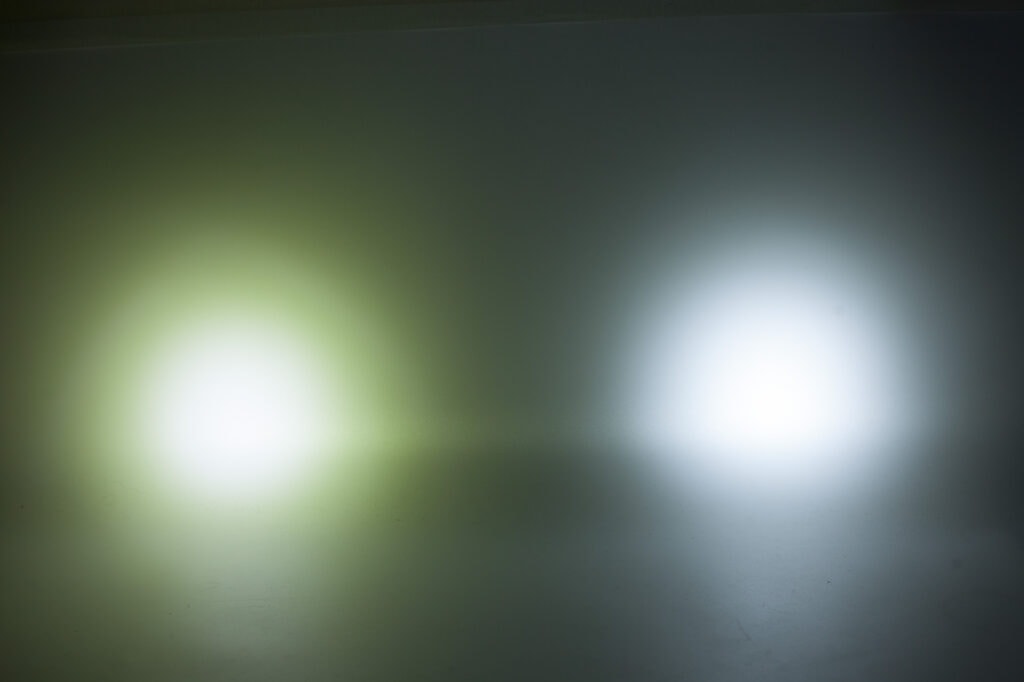
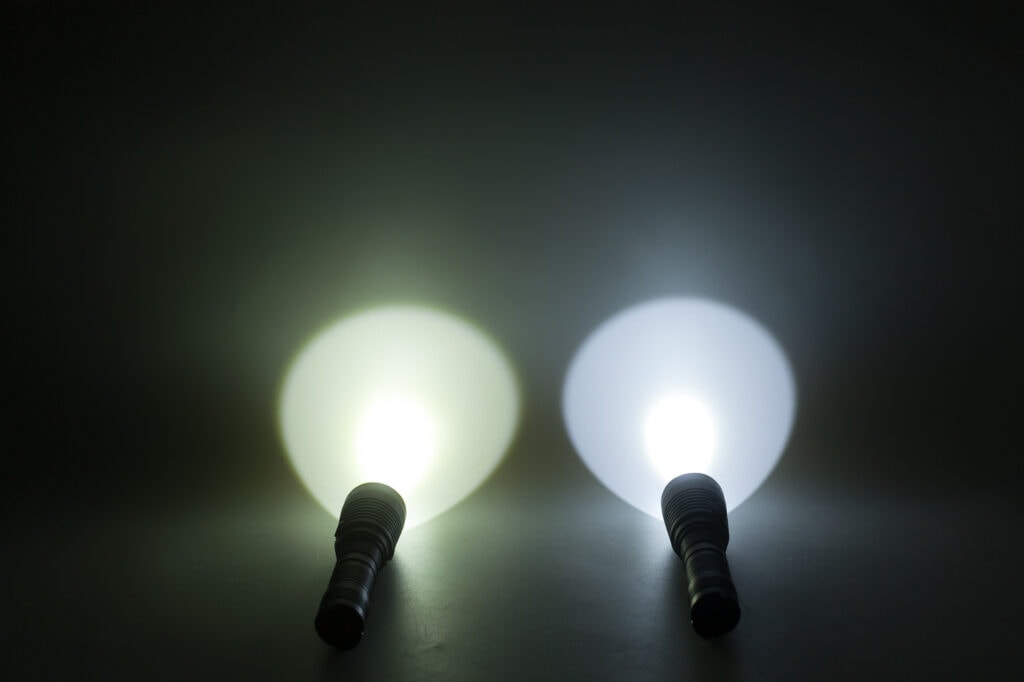
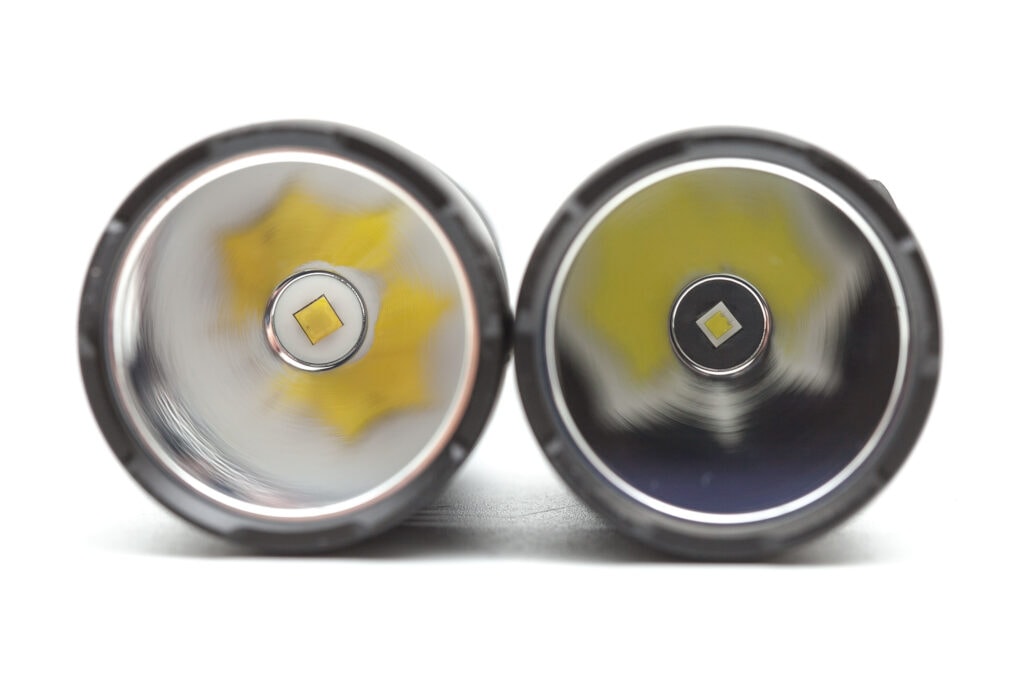
Dimensions and size comparison
- Length: 157.2mm / 6.19 inches
- Head diameter: 40mm / 1.57 inches
- Body diameter: 25.4mm / 1 inch
Weight:
- Without cells: 137 grams / 4.83 oz.
- With cells: 210 grams / 7.41 oz.
Flashlight comparison
Lights in images: Sofirn TF84, Nitecore MH25 V2, Klarus XT11GT Pro, Convoy C8
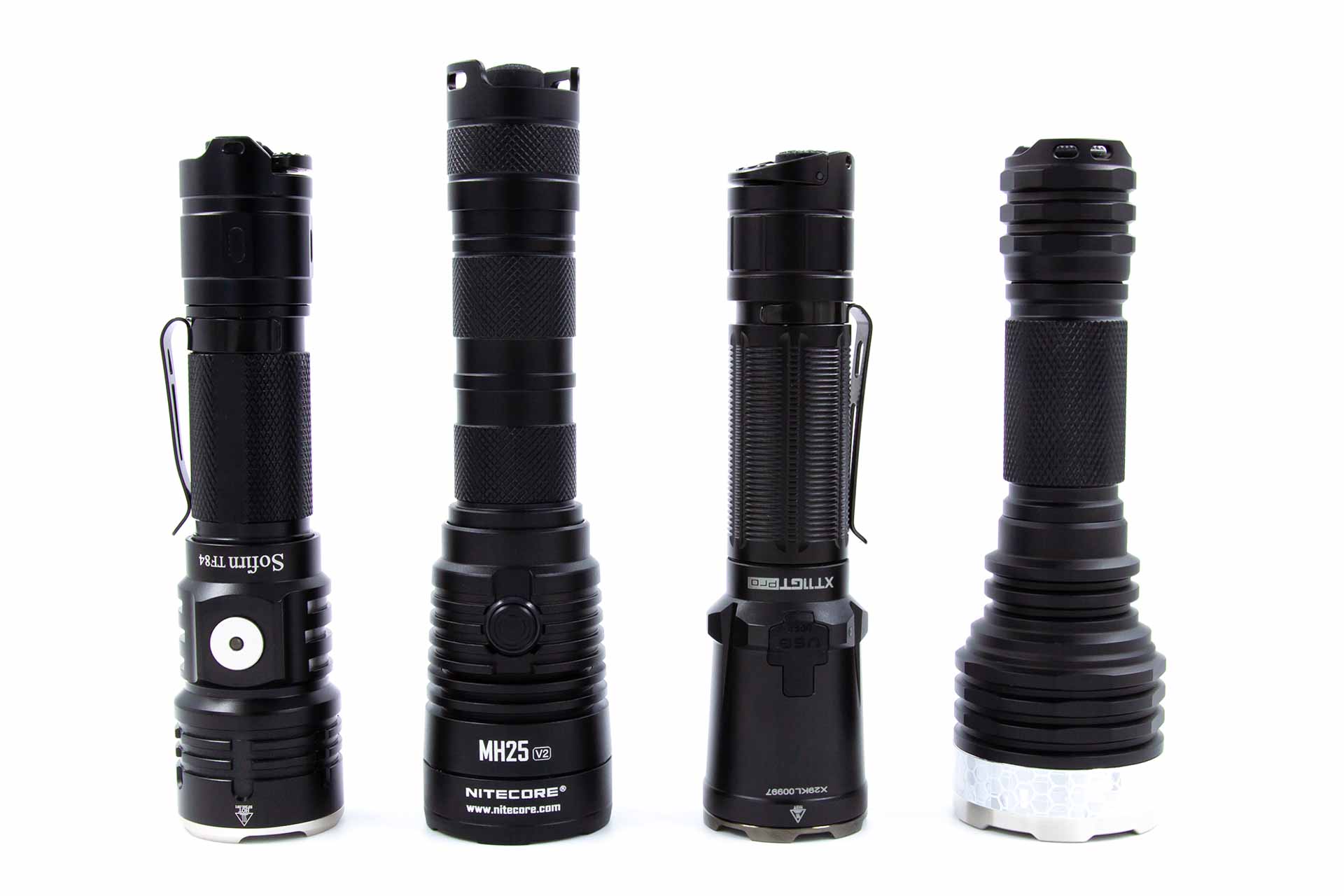
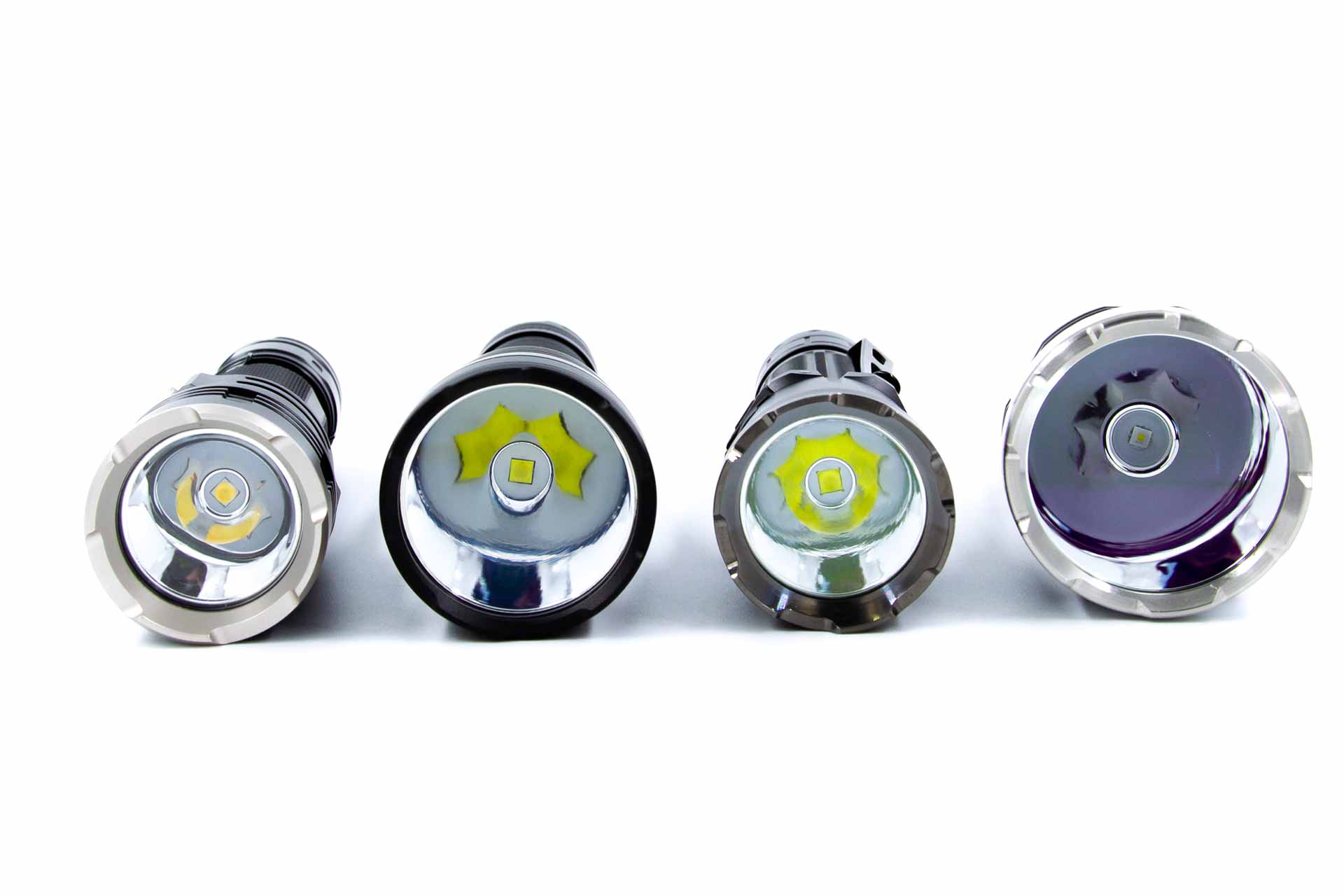
Driver & User Interface:
The Nitecore MH25 v2 is a tactical flashlight.
As with a lot of Nitecore lights, there’s multiple overarching “modes”, with slightly different configurations. In the MH25 V2, they’re Daily and Tactical modes. There’s four modes in total – Ultra-low, Low, Medium, and High.
Daily mode starts in Ultra-Low and cycles upwards to High, whereas Tactical mode cycles the other way (Turbo down to Ultra-Low).
To change between Daily and Tactical modes, hold the mode switch while the light is off, and then activate the tail switch. Keep holding the mode switch for around 3 seconds, at which point the main emitter will flash to indicate the mode it is now in; one flash for Daily, two flashes for Tactical. Release the mode button, and a second later, the light will turn on.
Modes: Ultra-low, Low, Medium, and High
Rear switch: From OFF:
- Fully click: On
- Half-press: Momentary on (Memory mode when in Daily mode – Turbo in Tactical mode)
Rear switch: From ON:
- Fully click: Off
Side switch: From OFF:
- Hold: To be used while activating the tail switch to change between Tactical and Daily
Side switch: From ON:
- One click: Change modes upwards/downwards (dependent on Daily/Tactical mode)
- Hold: Activates and cycles strobe modes:
- Daily mode: Strobe – Beacon – SOS. Release the side button to choose your desired strobe. To change strobe mode, you will need to return to last-used mode and start the strobe selection again.
- Tactical mode: Strobe only.
- For both Daily and Tactical modes, press the mode switch again to return to last-used mode.
Mode memory:
- Both Daily and Tactical modes remember what you were using last, but the momentary mode when half-pressing the tail switch will only remember the last in Daily mode.
Low voltage warning:
- When the battery is at 3.7V, the power indicator on the mode switch will flash every two seconds. When you get down to 3.15V, it will flash much more rapidly. At that point, it’s a good idea to swap cells.
- The battery voltage can be checked by holding the mode button, then activating the main switch. Release the mode button immediately after, and the mode button backlight will flash out the voltage (eg. four flashes, a pause, then one flash means 4.1V).
Strobe/blinkies
- As above, you can access Strobe in both Daily and Tactical modes, and Beacon or SOS in Daily mode. This is done by holding the mode switch while the light is on.
Lock-out mode:
- You can lock the light out by twisting the tailcap ¼ turn; there’s no software lockout.
This is identical to the other MH-series lights barring the mode count (eg. 5 modes on MH12S), and consistency is always a good thing.
Batteries & Charging
The MH25 V2 comes with the Nitecore NL2150 cell, a 5000mAh 21700, complete with protection circuit. While the maximum output of the cell isn’t specified, it doesn’t need to be, as long as it can handle what the light needs.
This can be charged within the light itself via the included USB-A to C cable, or via USB-C to C.
You can also charge an 18650 in the battery magazine within this light. I would not at all recommend trying to charge 2*16340 in the carrier, and definitely don’t try to recharge CR123s!
Because the Nitecore MH25 V2 doesn’t use a proprietary cell, you can use most 21700s in this. I’ve tested with a Samsung 40T, and a Liitokala 50E, and both work fine. That said, they’re slightly narrower than the Nitecore cell and rattle a bit when jiggling the light around. The NL2150 fits snugly and doesn’t rattle.
Note that I don’t necessarily suggest just going out and throwing another 21700 in there, as the protection circuit can be useful in a light such as this.
That said, it’s time to do a little secret reveal: the Nitecore NL2150 is actually an LG M50LT, or at least this one is. I’m unsure how this differs from an M50T, but suffice to say, it’s a 10A discharge rated cell. Nice to know what’s under the wrapper! And now I have a rattly light (great work…sigh).
Don’t unwrap cells, kids – leave that to the reckless trained professionals (ahem).
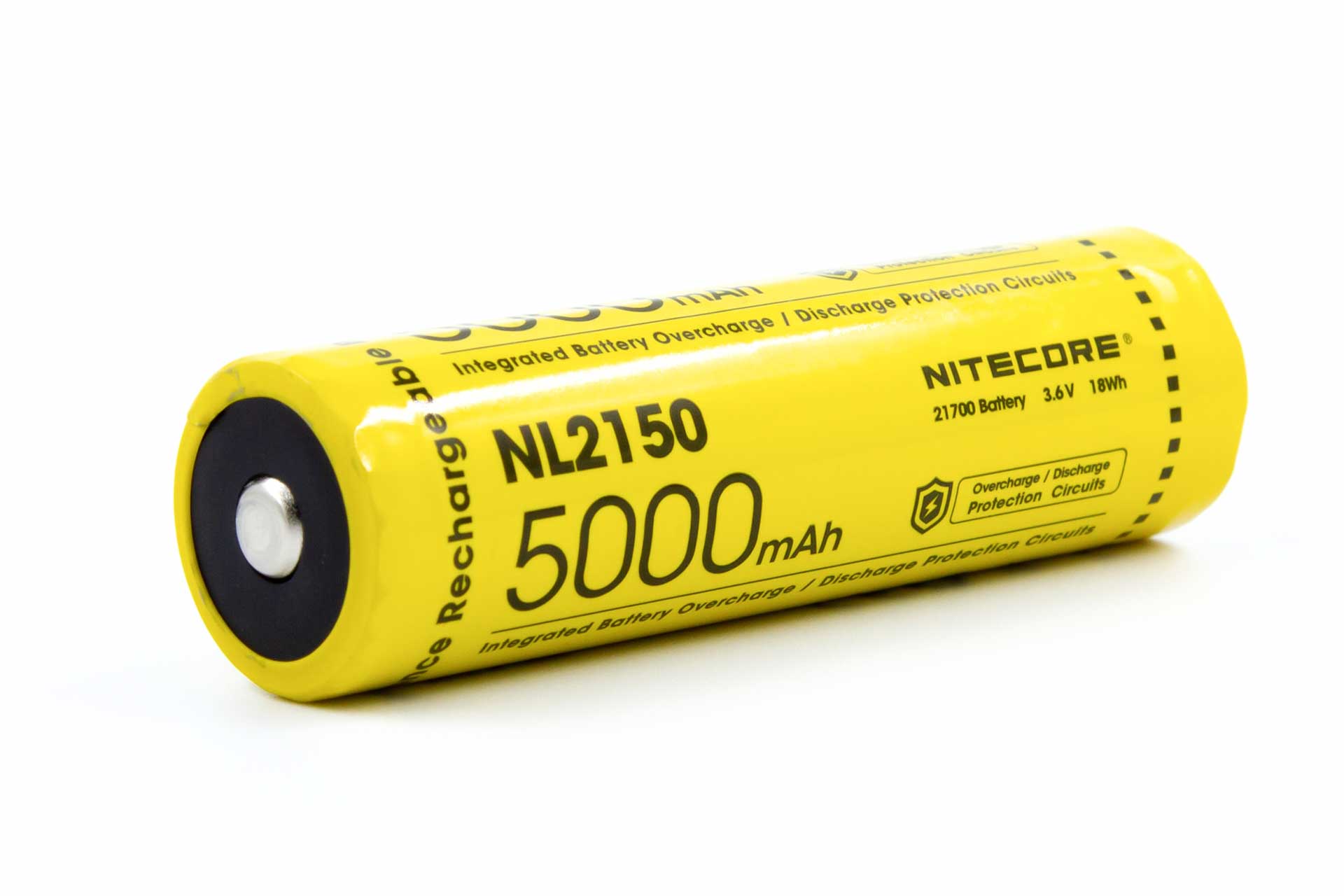
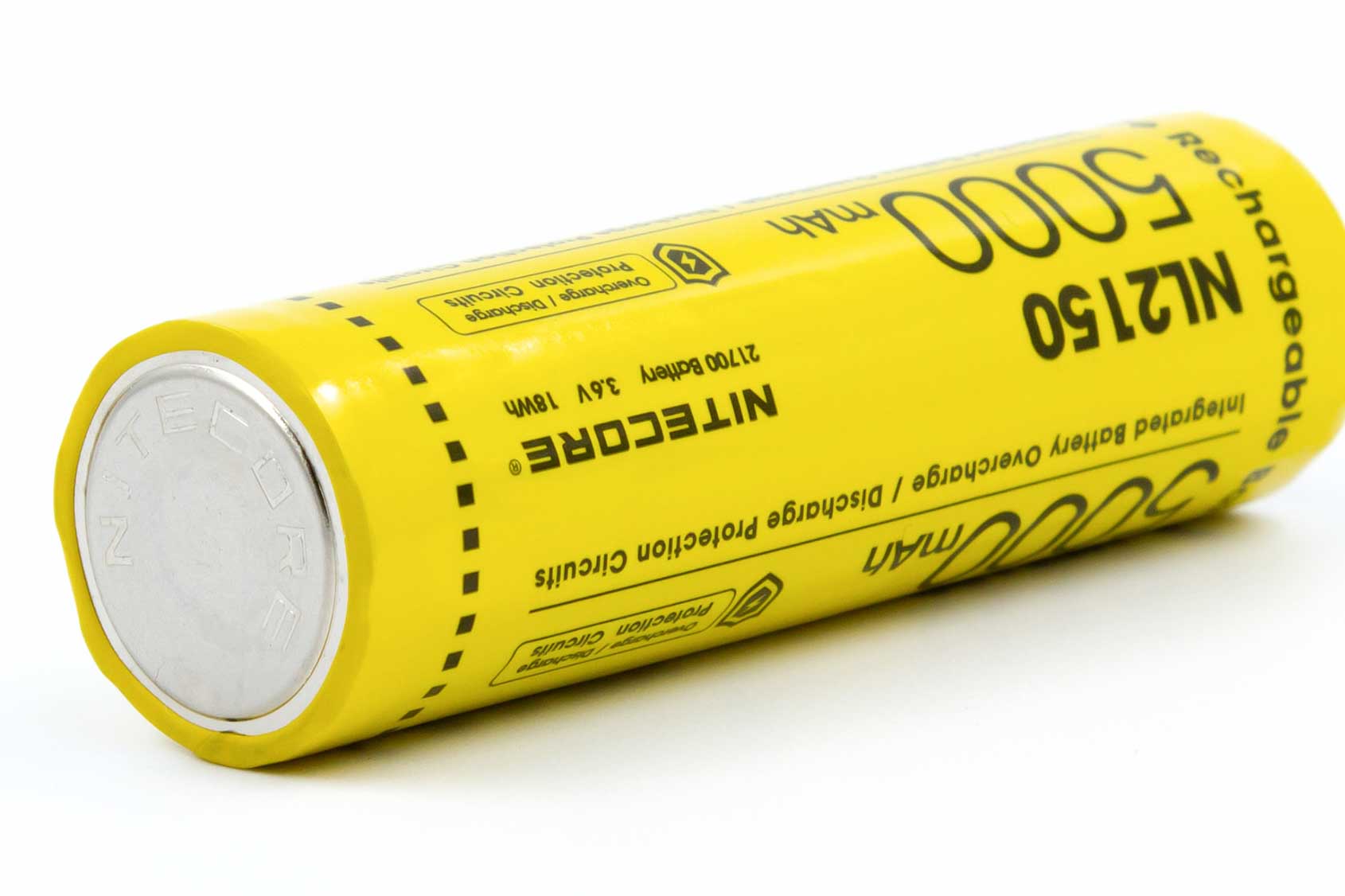
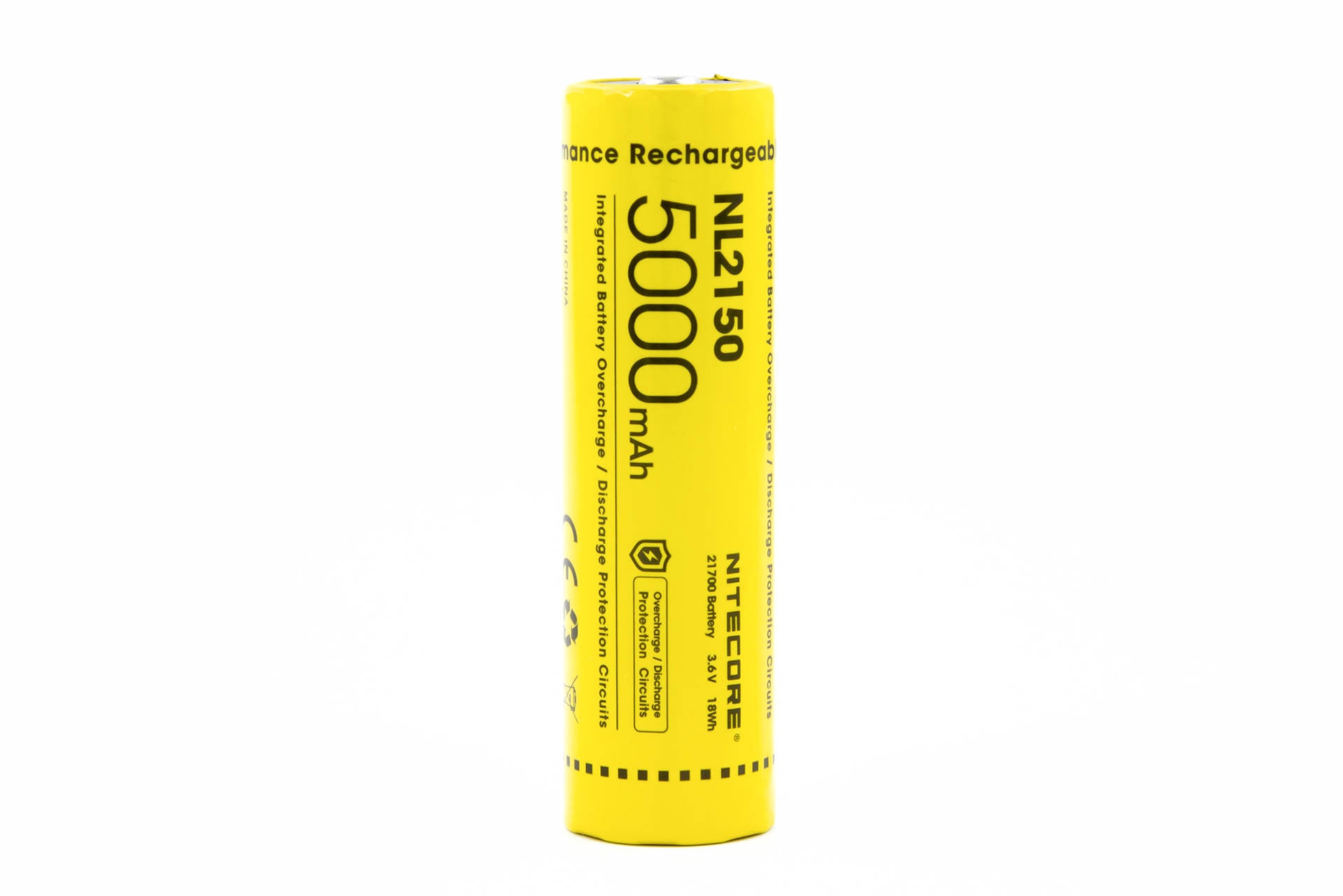
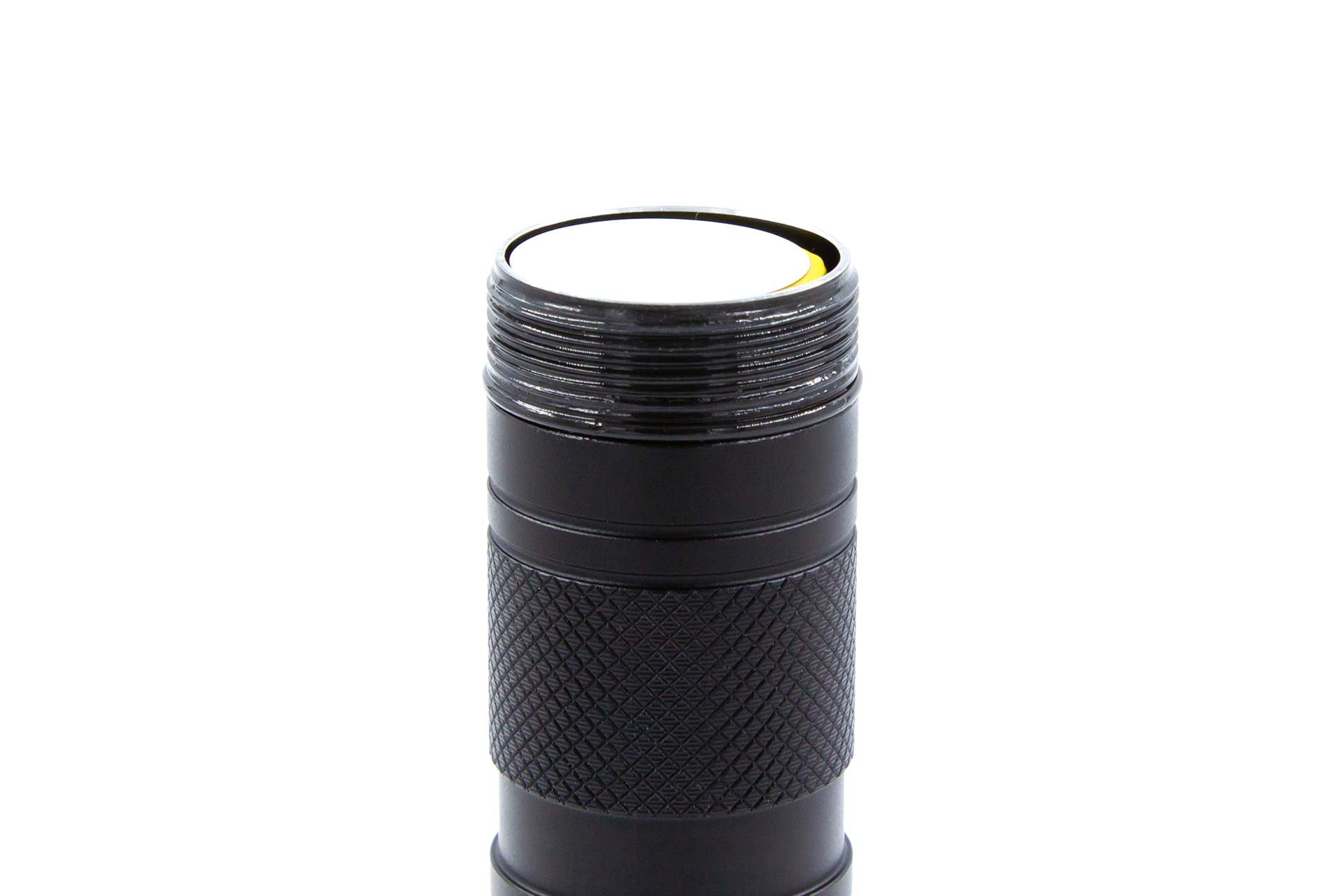
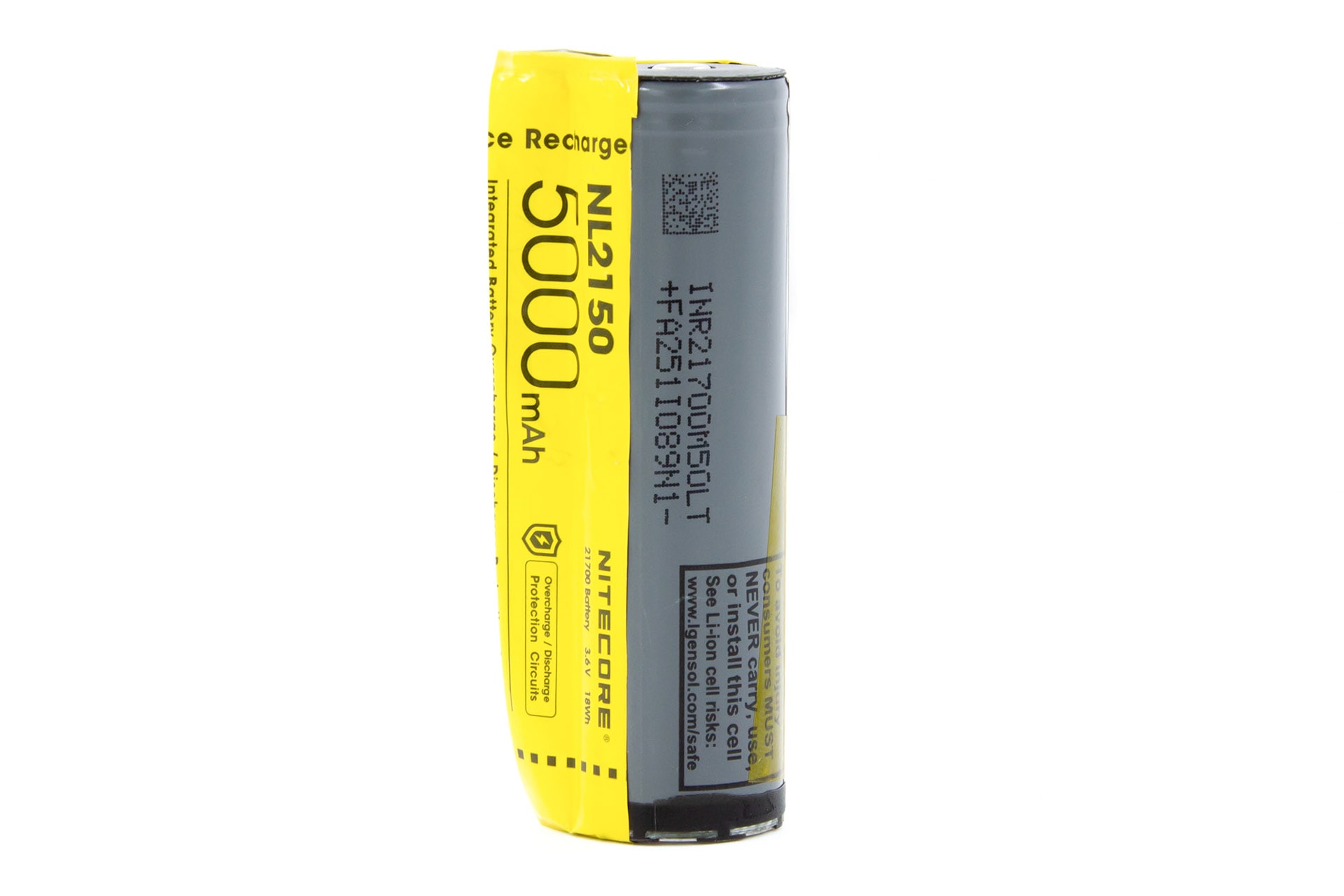

Performance
For my readings, I use the following:
Lux Meter: For lumen readings and runtimes, an Adafruit TSL2591 connected to a Raspberry Pi running Ubuntu, using RuTiTe by bmengineer in a custom sphere. A UNI-T UT383S is used for candela readings.
DMM: UNI-T UT139C and UNI-T UT210E – 16AWG wire is used directly into the 139C via some banana plugs, and 8AWG wire in a loop for the UNI-T. The DMM I use depends on how high the expected current will be – I use the 139C for <10A, and the 210E for >10A.
Lumen measurements (for each mode)
| Mode | Amps at start | Specs | turn on | 30 sec | 10 min |
|---|---|---|---|---|---|
| Ultra-low | 3mA with brief jumps to 5mA every few seconds | 1 Lumen | 1 | 1 | 1 |
| Low | 82mA | 50 Lumens | 43 | 43 | 42 |
| Mid | 500mA | 300 Lumens | 258 | 252 | 241 |
| High | 3.8A | 1300 Lumens | 1240 | 1149 lm | 681 |
Parasitic drain:
- No parasitic drain due to mechanical tailswitch.
Runtime graph
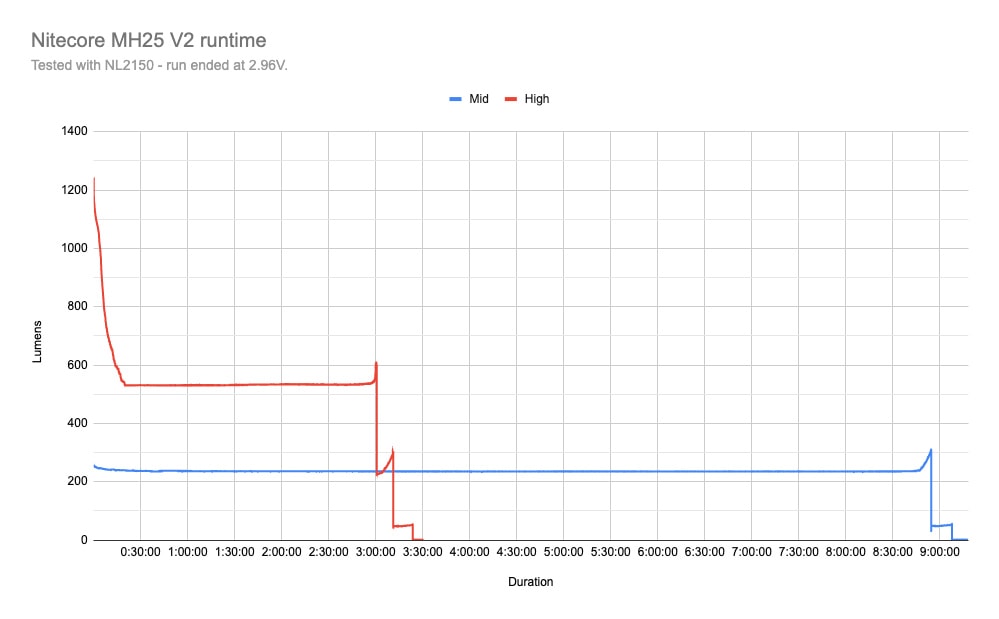
As I (moderately) expected, High drops off fairly rapidly, diving to around 530 lumens by the 20 minute mark. If then holds steady until the 2:50 point, rising back up, then dropping down a few times in a bit of a regulated mode-drop fashion. Mid is a nice solidly regulated output for almost 9 hours.
The runtime for High is rated at 3h, and that’s almost exactly when it drops down to Mid mode and then does its dance. Mid is rated at 8h30m, and it goes past that before its own dance.
All in all – quite acceptable.
Throw numbers:
All readings were taken with the Uni-T UT383S at 10m except for Ultra-low – I had to take this at 5m as it was below the threshold of my lux meter at that range.
| Mode | Specs | Candela measured | Meters | Yards |
|---|---|---|---|---|
| Ultra-low | 30 cd | 50 cd | 14.14 | 15.46 |
| Low | 1,900 cd | 1900 cd | 87 | 95 |
| Mid | 11,300 cd | 12,900 cd | 227 | 248 |
| High | 57,000 cd | 60,700 cd | 923 | 539 |
It’s nice to get slightly higher than expected throw ratings!
Beamshots
Edit: updated in December 2022 with beamshots from Marco.
For the following beamshots, I used a Canon EOS 5D Mk2 with a 50mm lens. Manual settings: ISO1600, 1/4sec, F4, 5000K
The shed is about 65 meters / 71 yards away, and the reflective fence about 200 meters.
- Nitecore MH25v2 old
- Nitecore MH25v2 new
- Nitecore MH25s
- Olight Warrior X PRO
- Olight Warrior 3S
- Olight Warrior X3
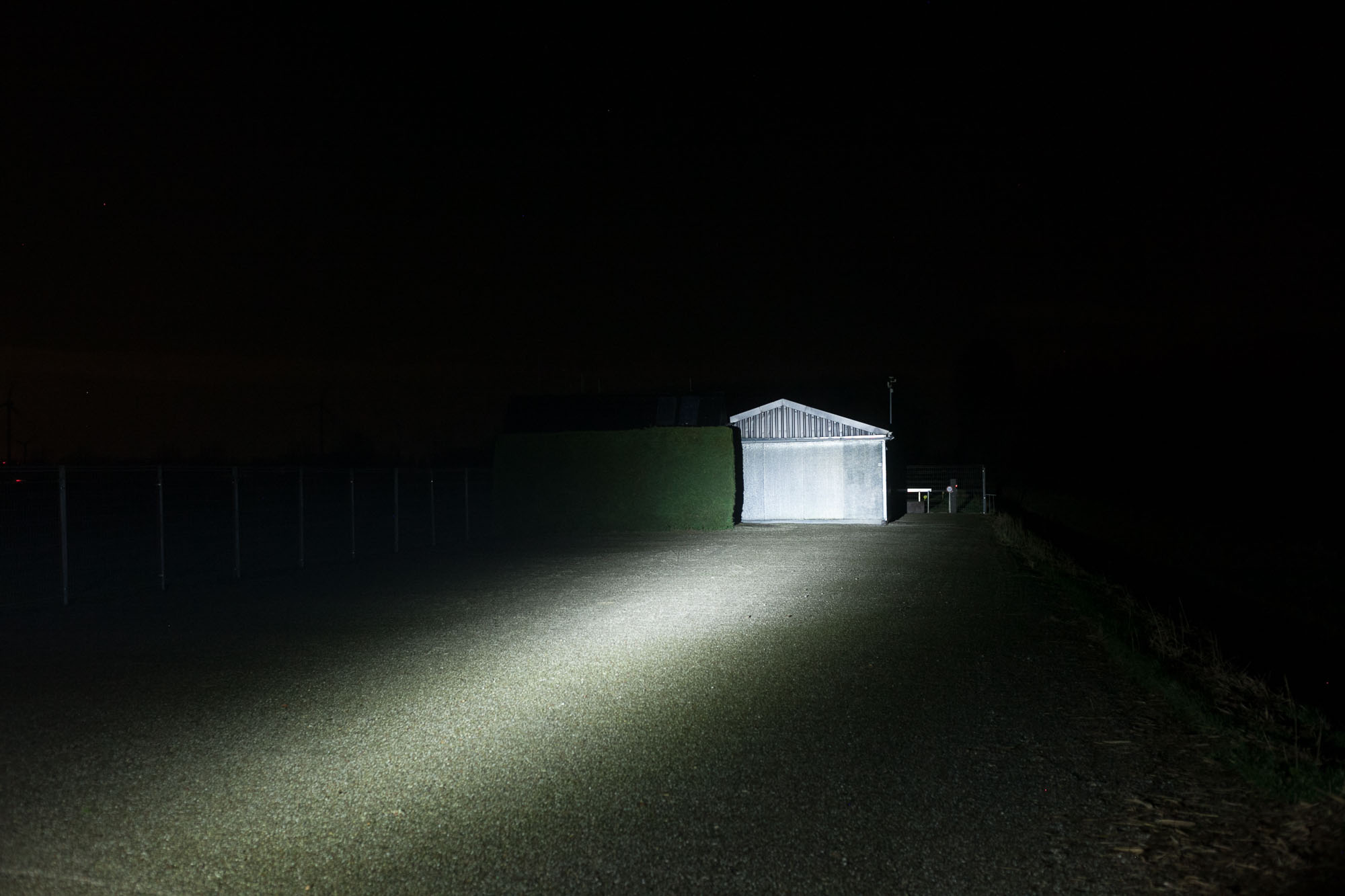
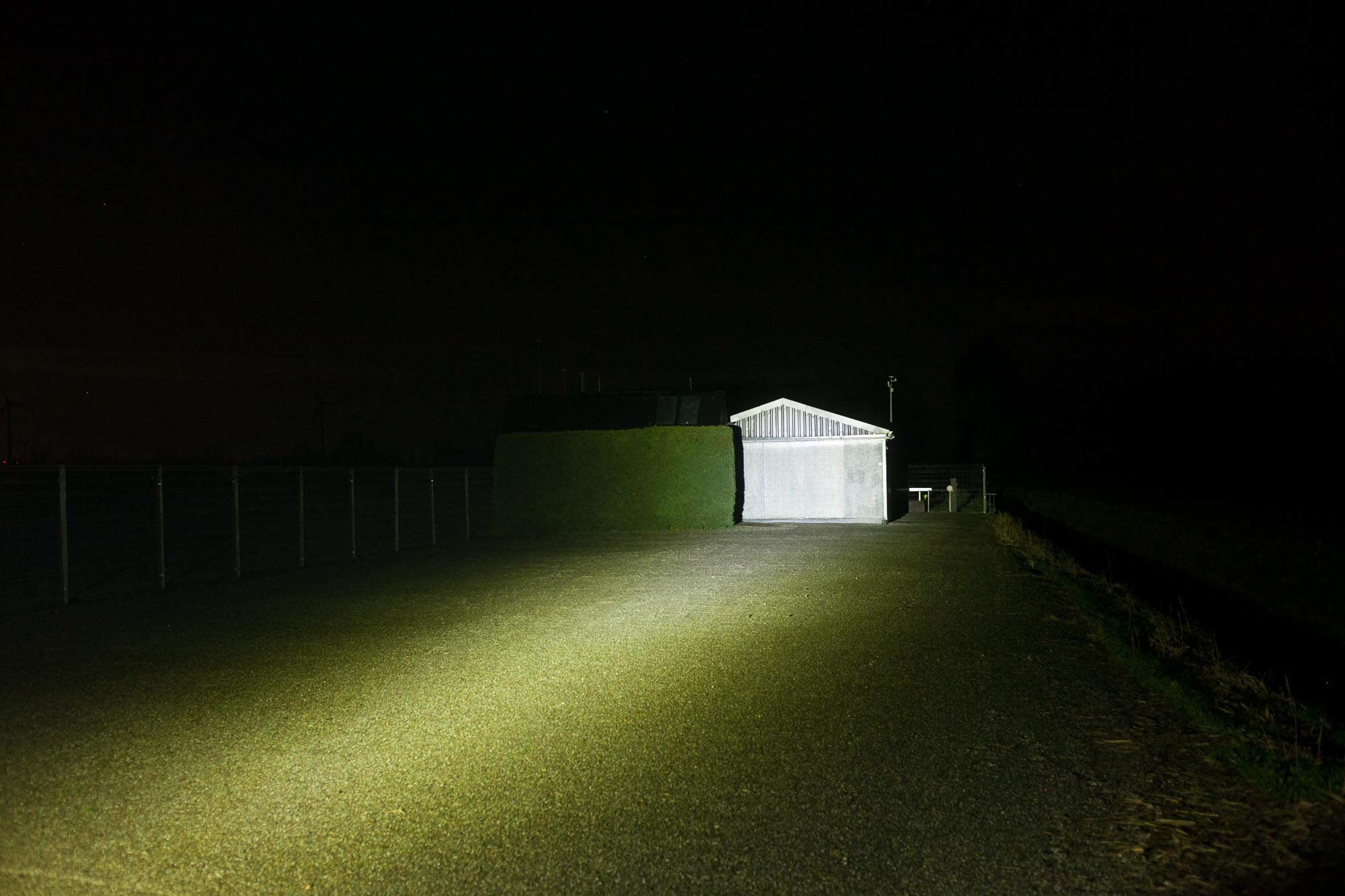
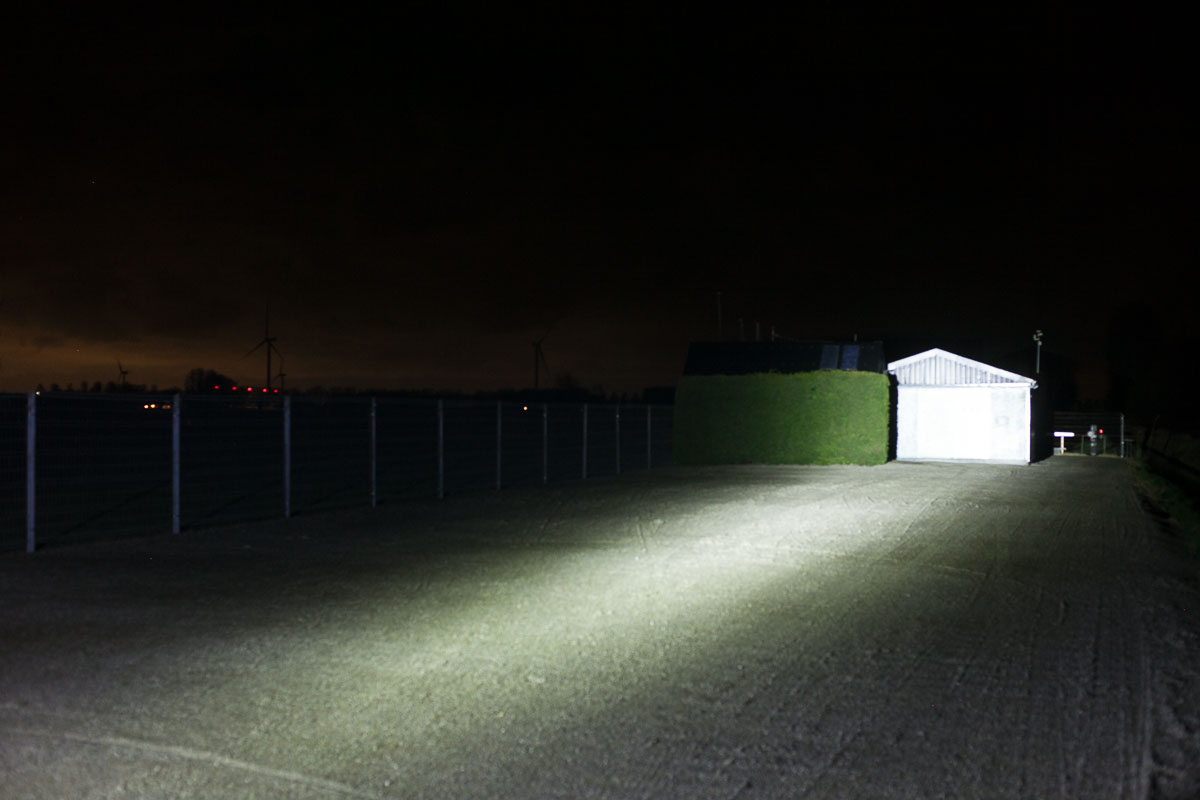
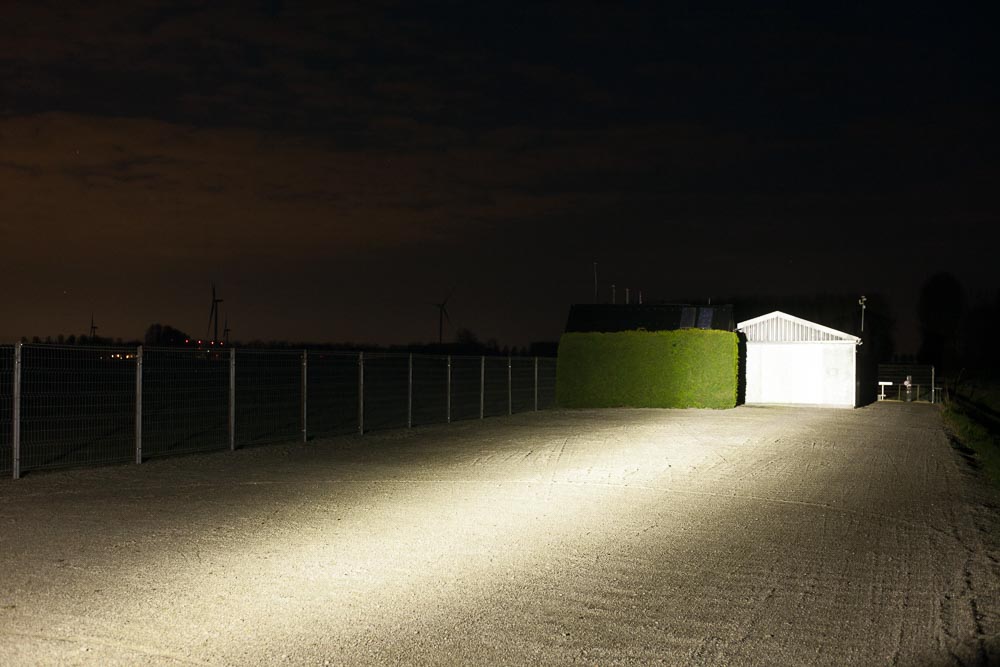
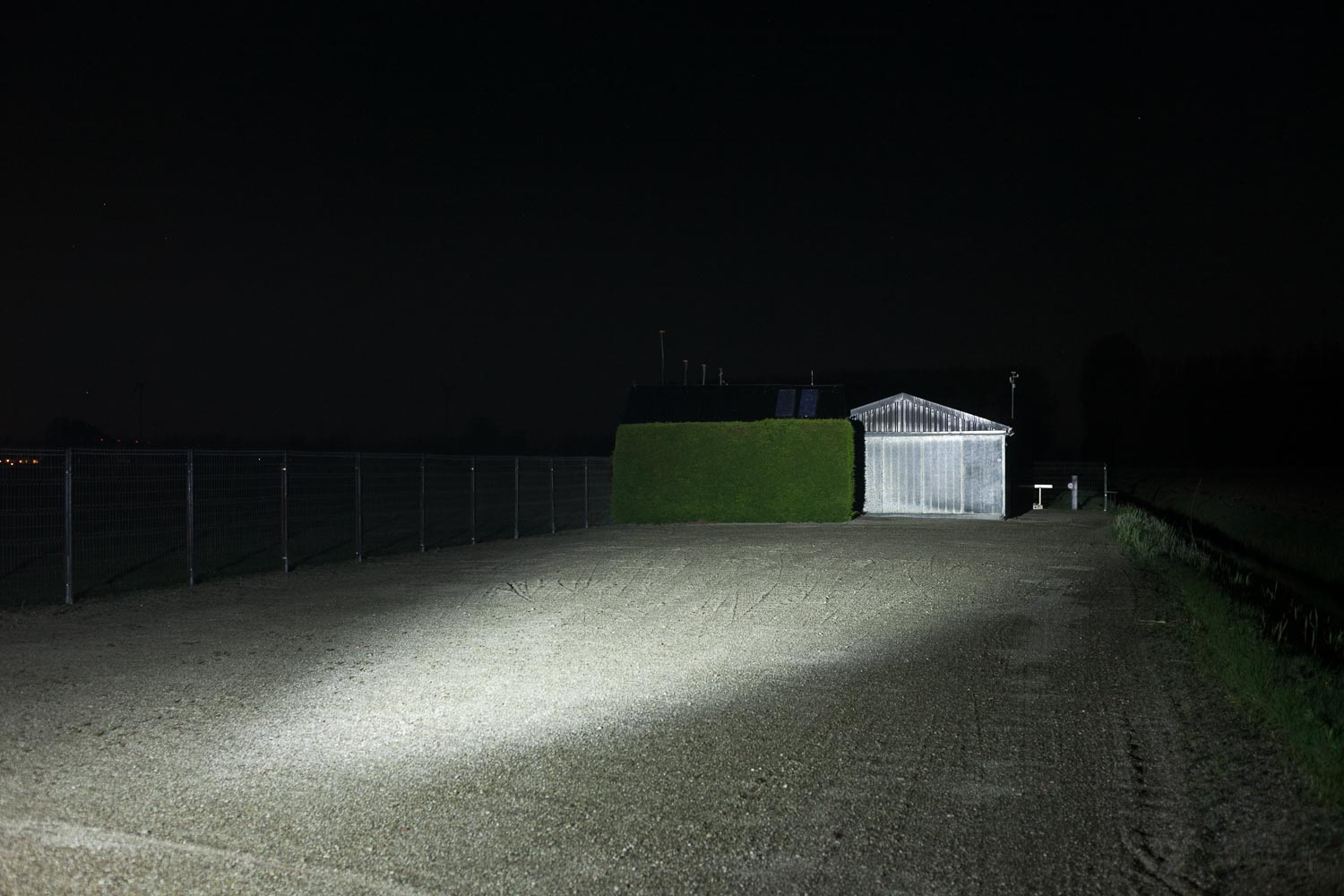
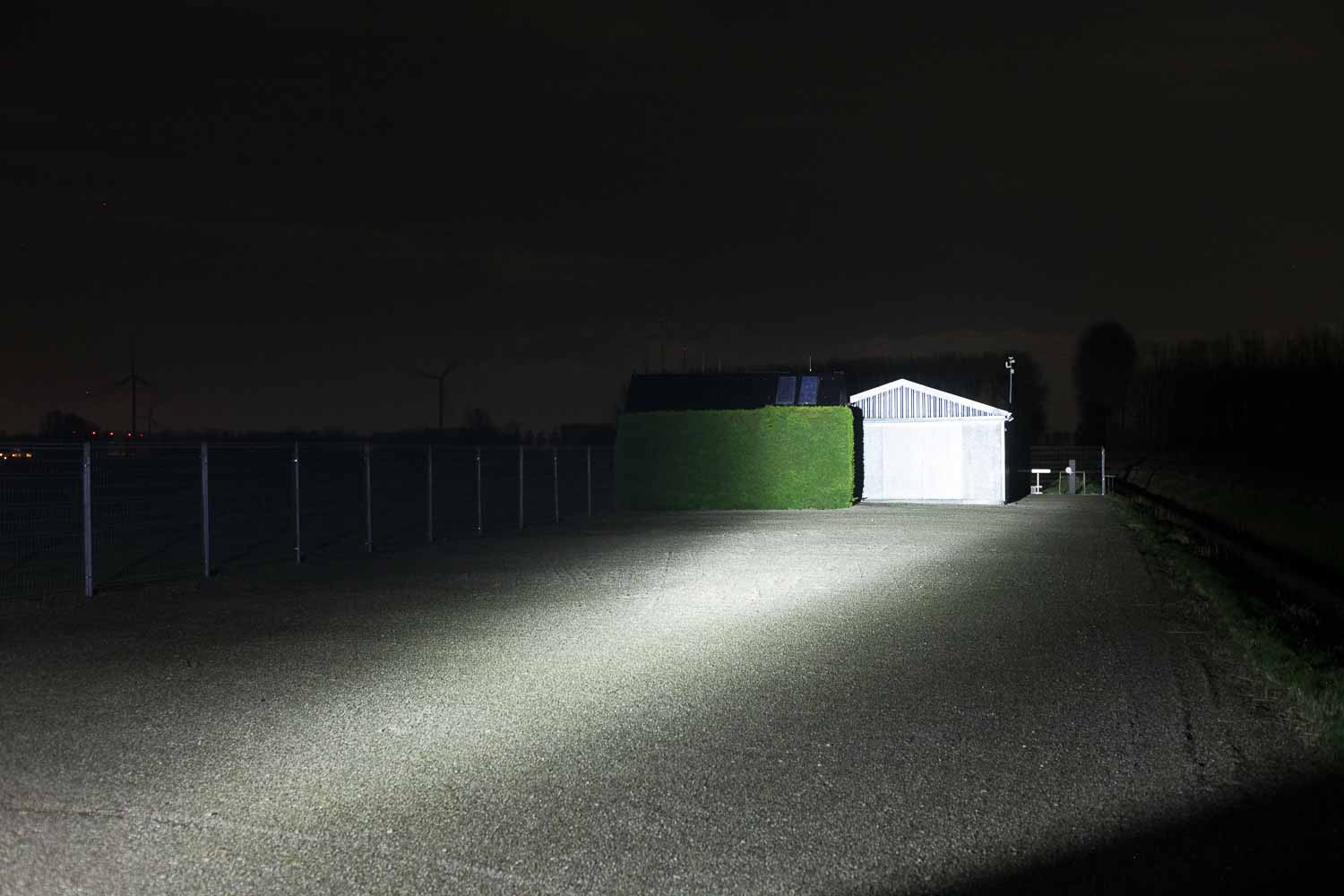
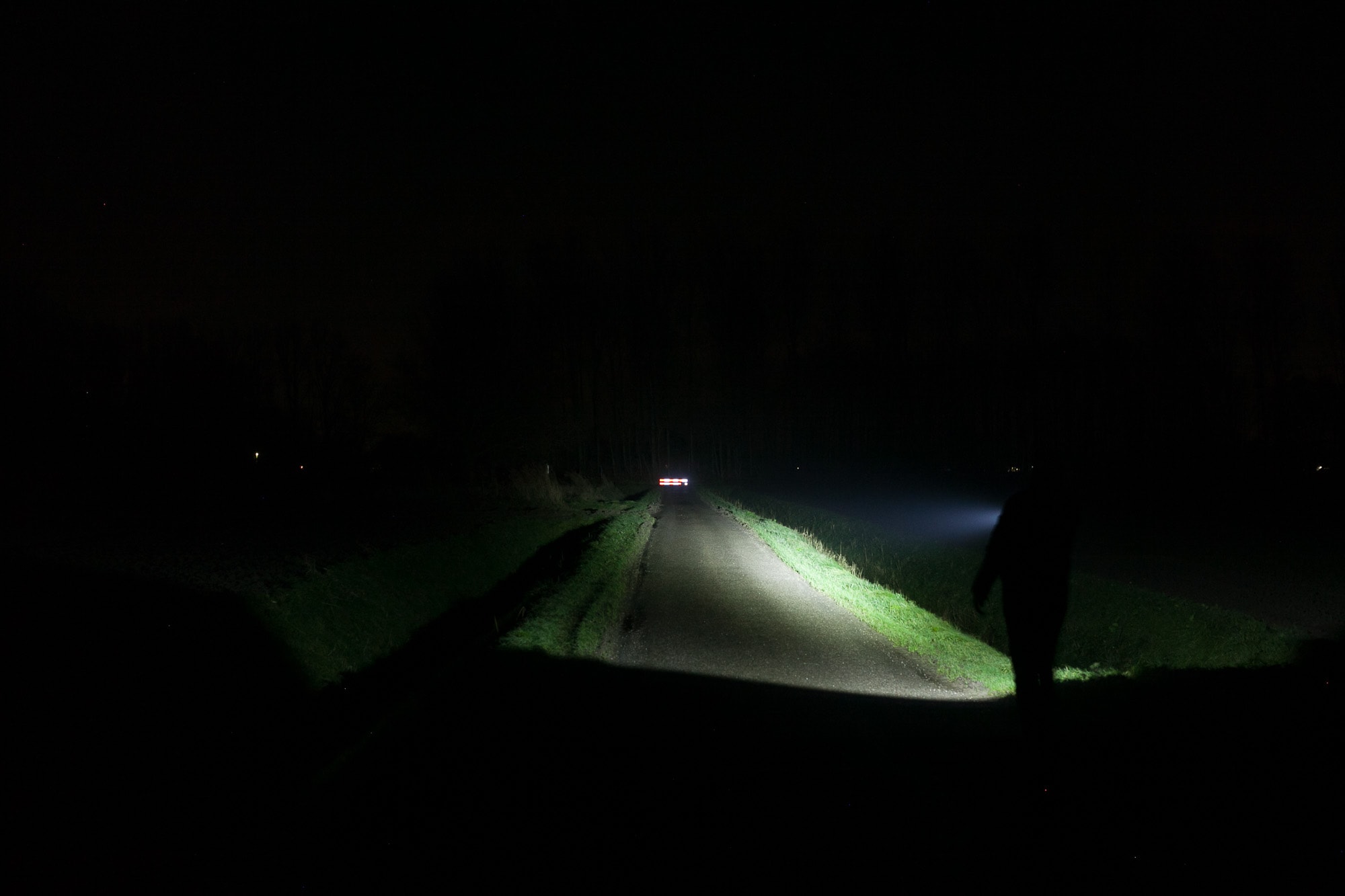
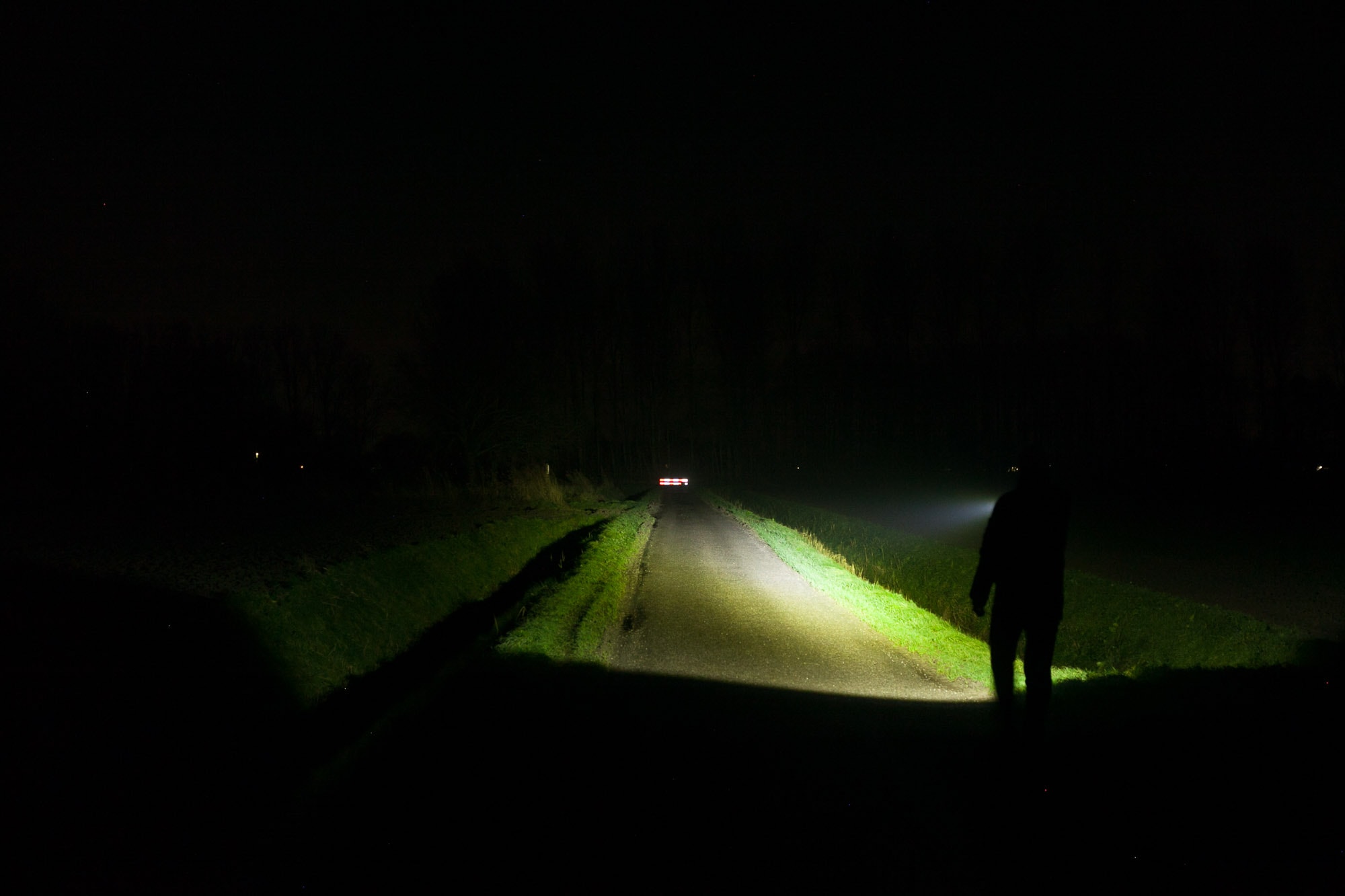
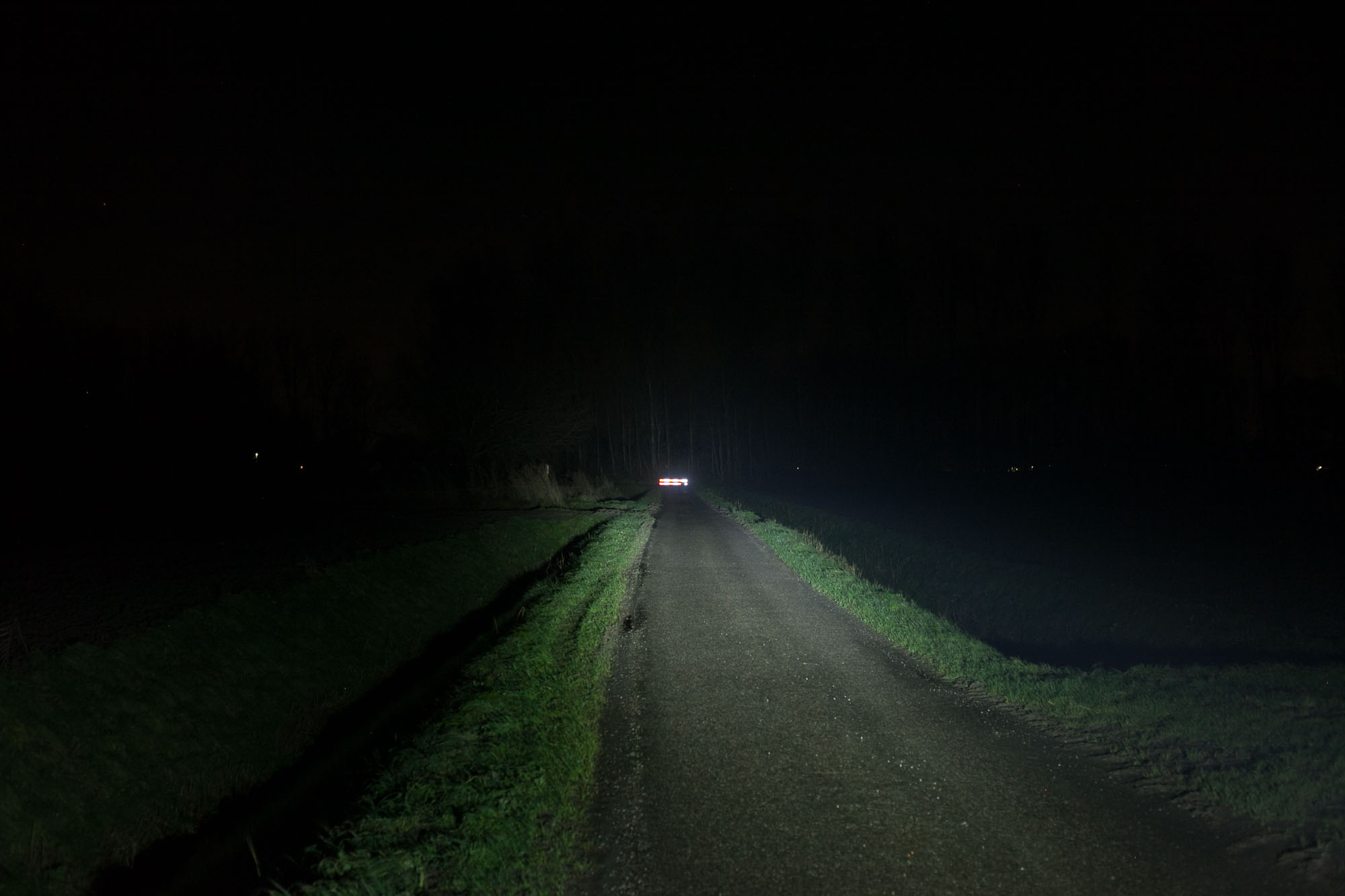
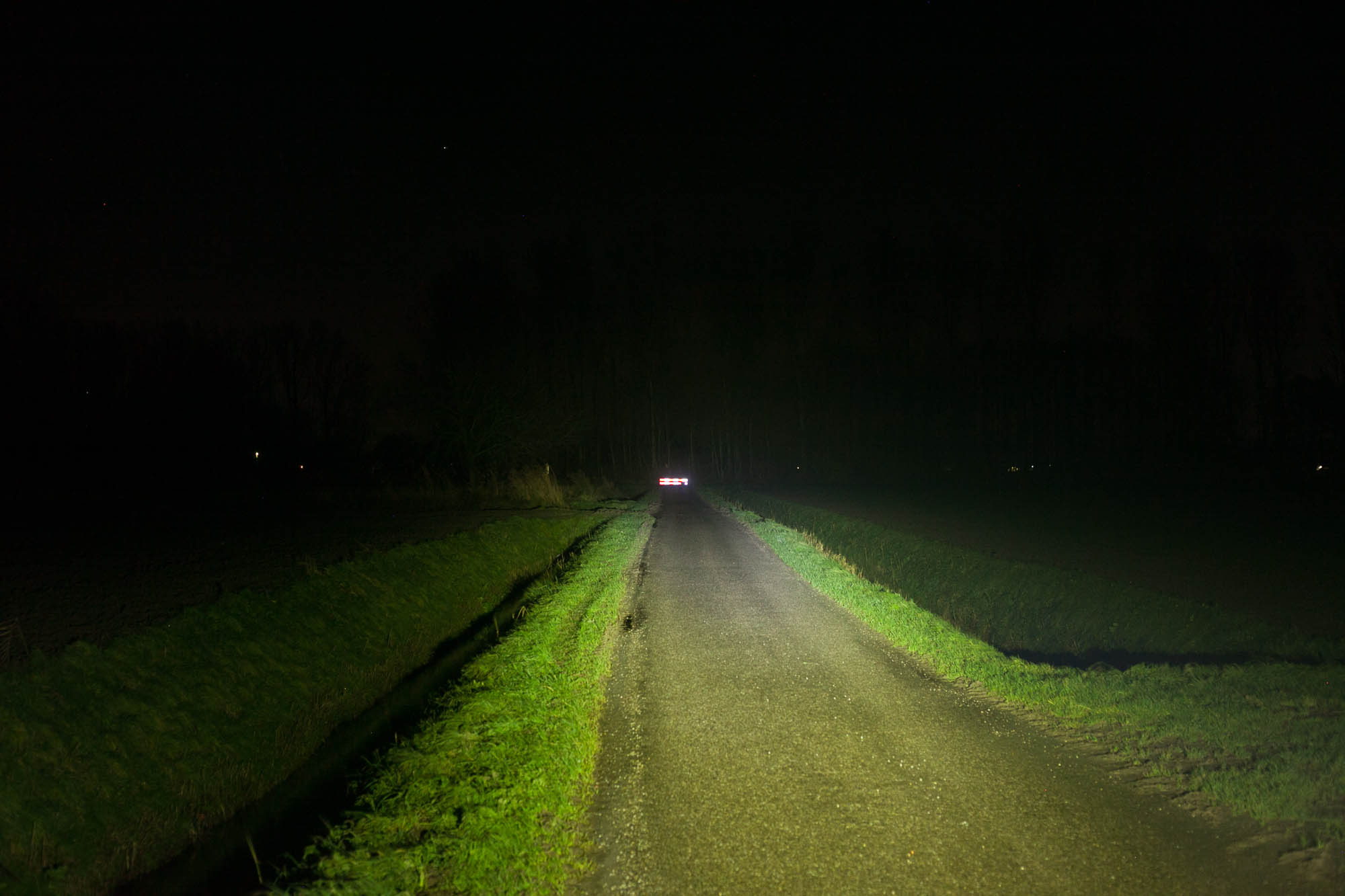
That last picture of the New version seems like I shots in the wrong mode. The difference is pretty big, unlike the other comparisons.
Disclaimer: This flashlight was sent to me for review at no cost by Nitecore. I have not been paid to review, nor have I been holding back on problems or defects.
Final Verdict
Pros
- Neutral white!!
- Non-proprietary cells
- Throw and runtime that outperforms specifications
Cons
- Mode switch can be hard to use while holding in over-hand mode with thumb on tail switch
Explanation on star ratings:
1: Avoid: my phone flashlight would be a better choice – 2: Poor: significant defect or issues; almost unusable – 3: Average: some defects or issues; but still usable 4: Good: recommended (minor issues) – 5: Great: highly recommended

4.5 stars: ★★★★⋆
I really like this light, and really, it only has one gaping flaw – and that’s the emitter. (Edit Marco: the emitter has been upgraded, and doesn’t look green anymore, please check out the beam comparisons.
There’s plenty to like about it though, and it’s a very well-built light.
I give the MH25 V2 4.5 stars. (Update: this reflects the new, updated LED)
Now to break out the strap wrench to try and get the head open…
Nitecore MH25 v2 discount coupon codes
Get 15% off by using discount code 15OFF on orders above $75. Below $75, use our unique coupon code 1Lumen to get 10% off.
1lumen selects and reviews products personally. We may earn affiliate commissions through our links, which help support our testing.